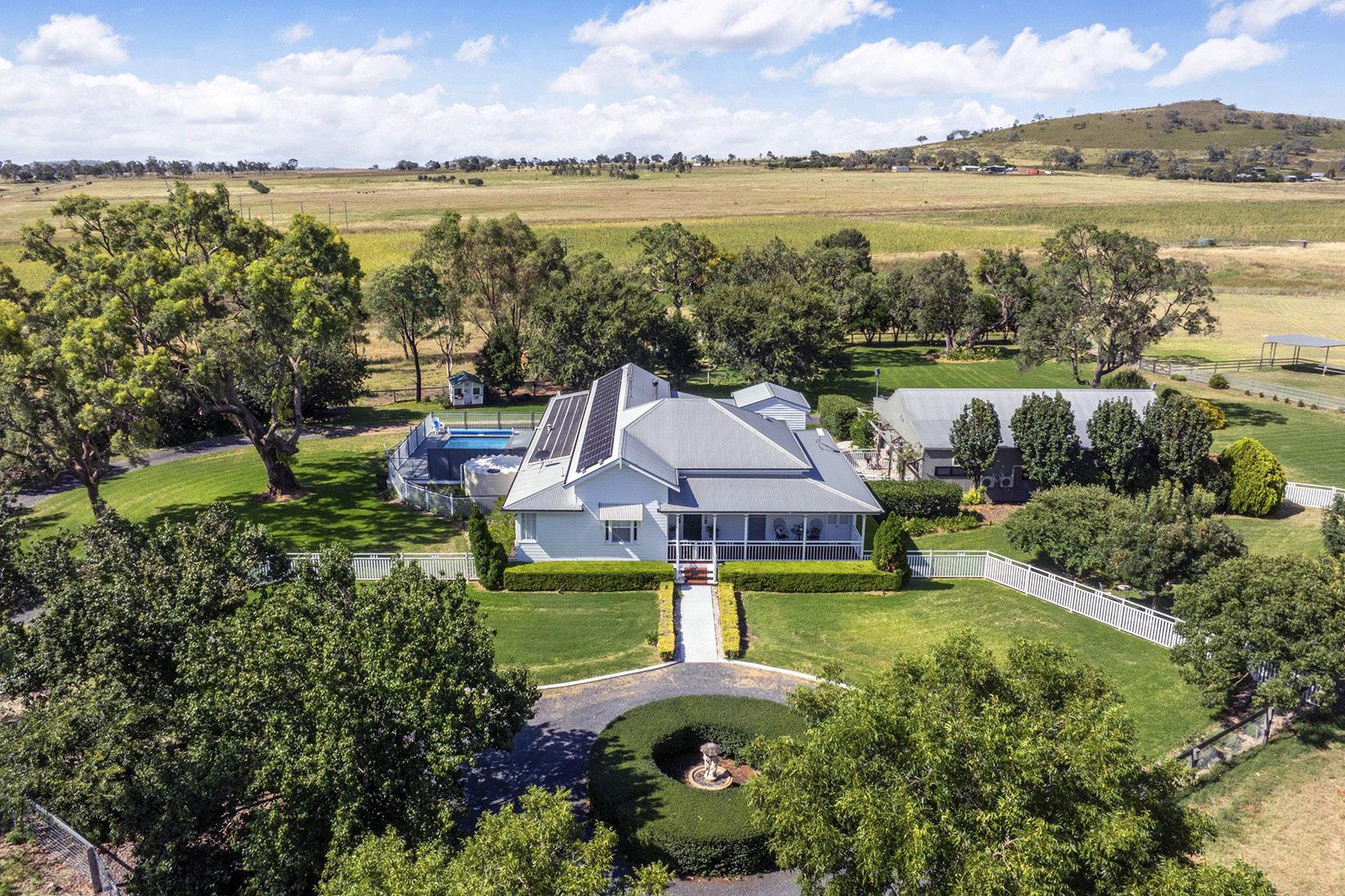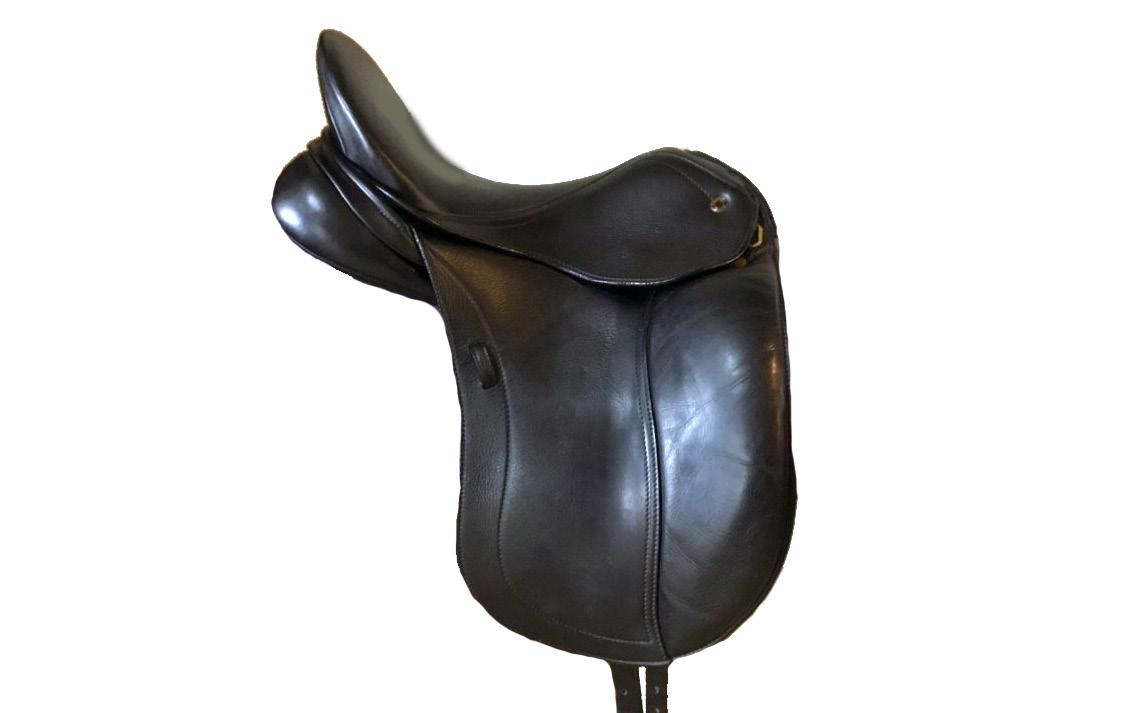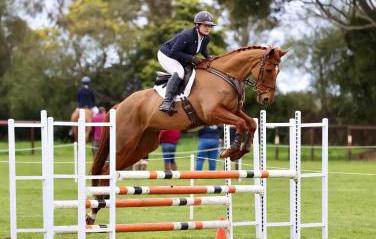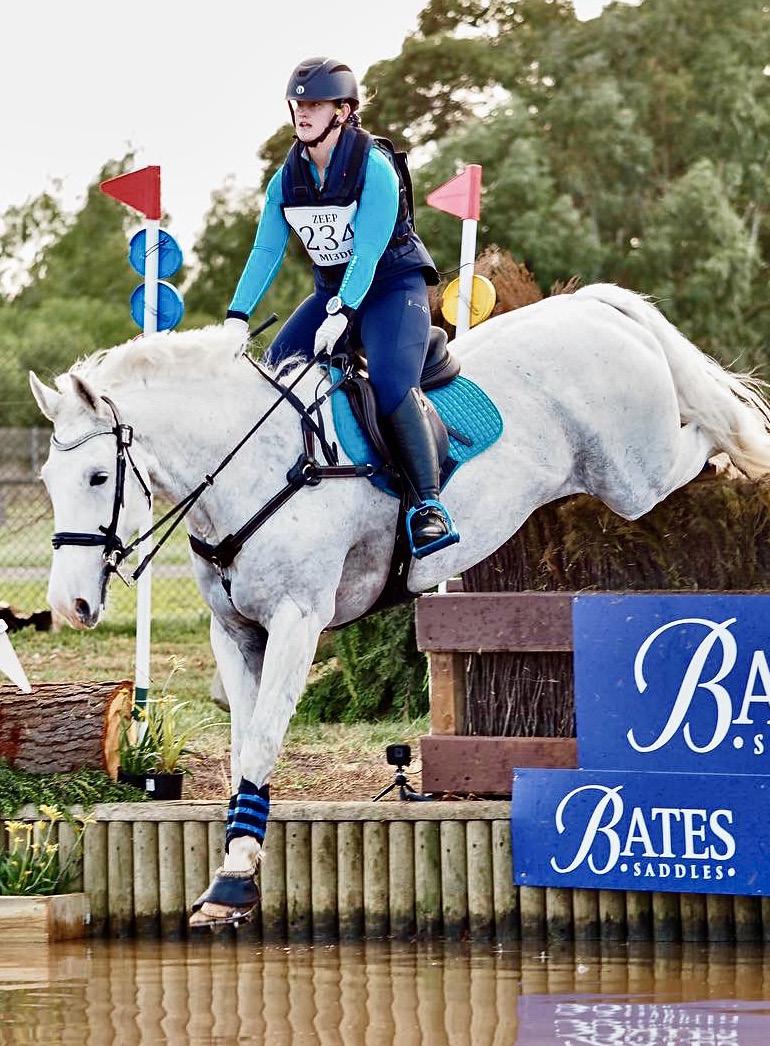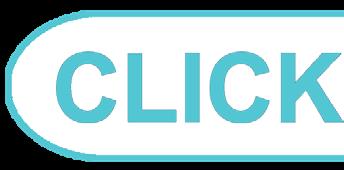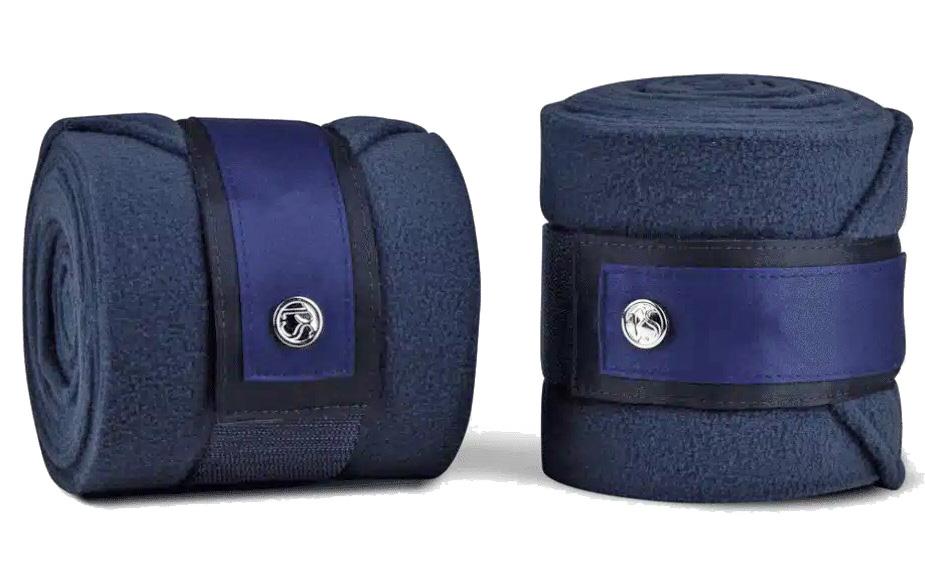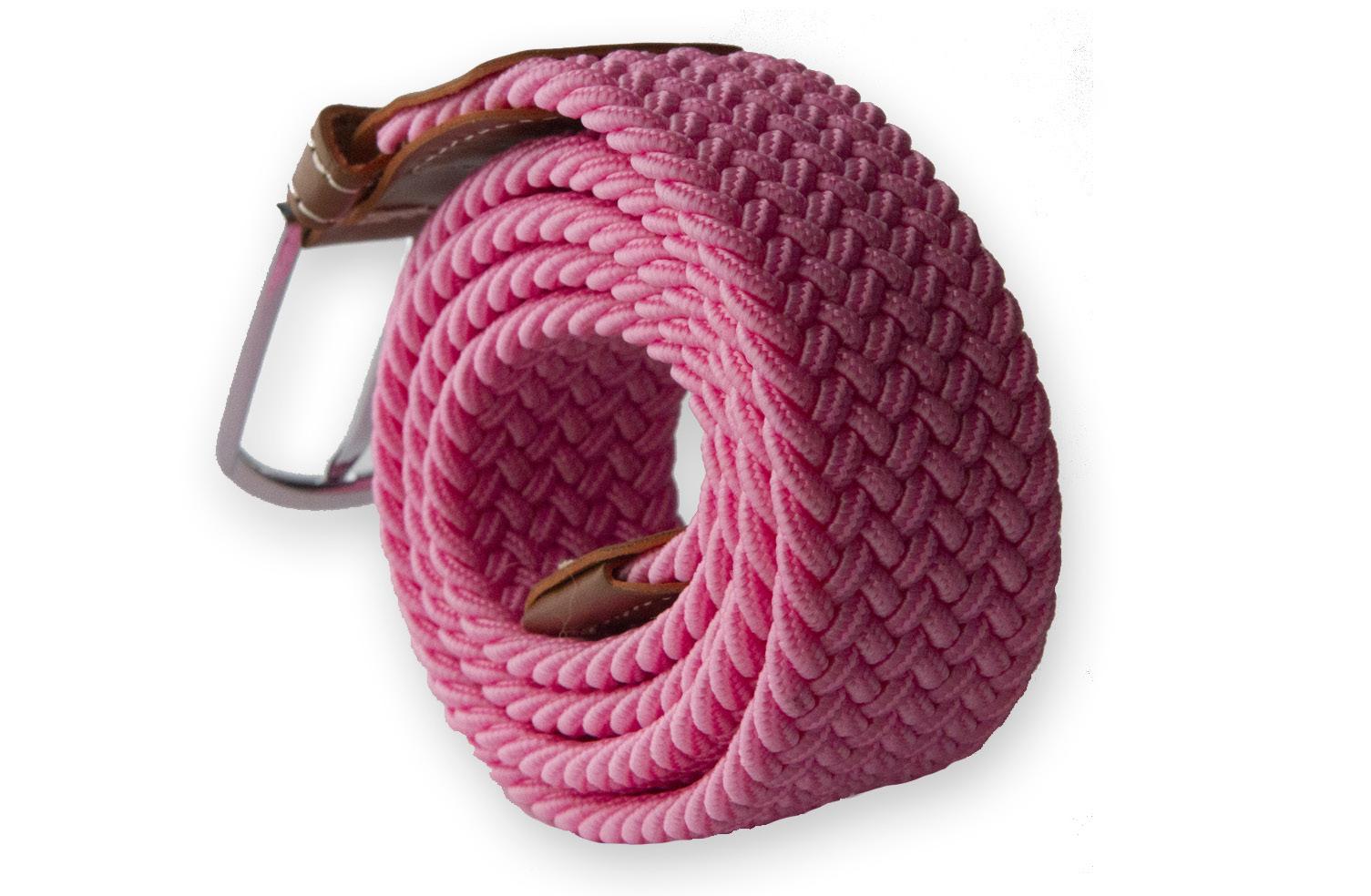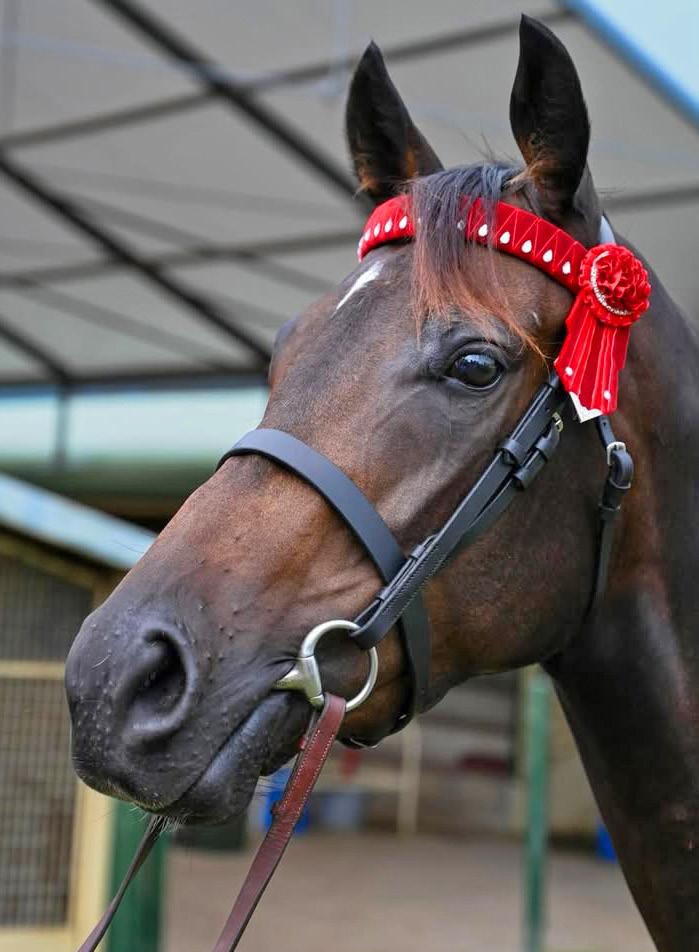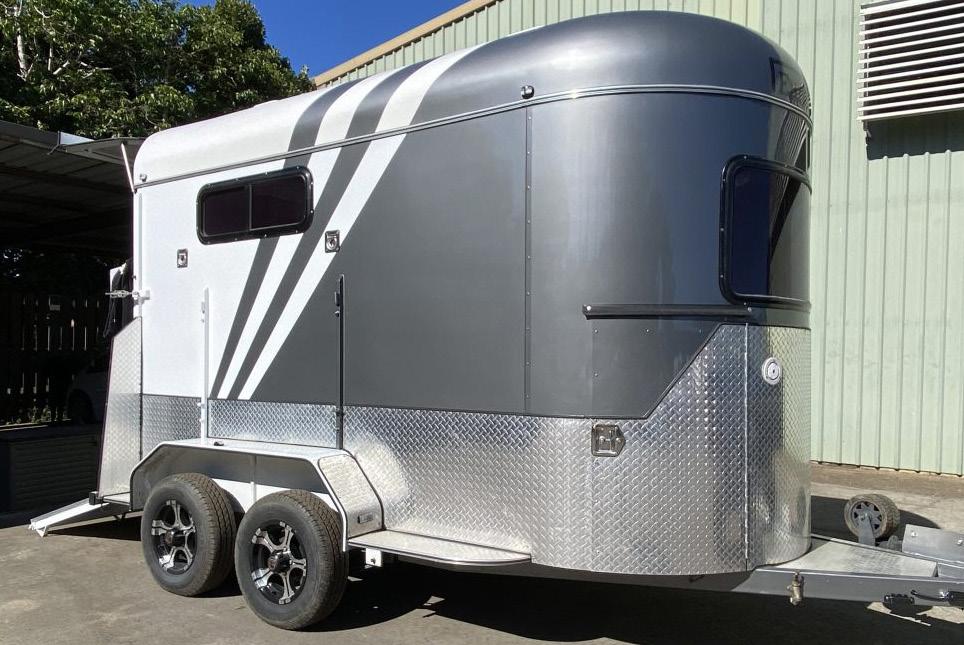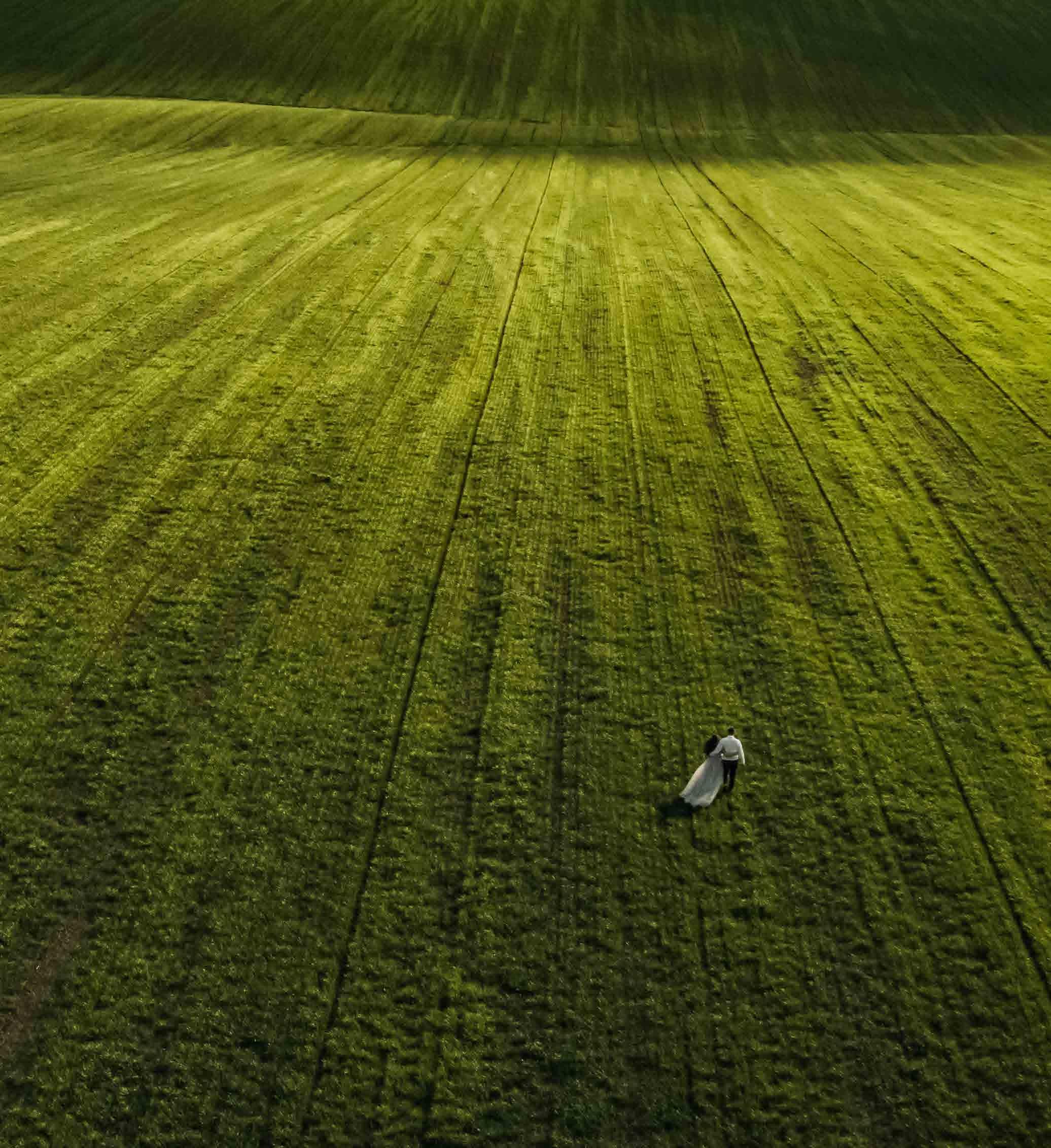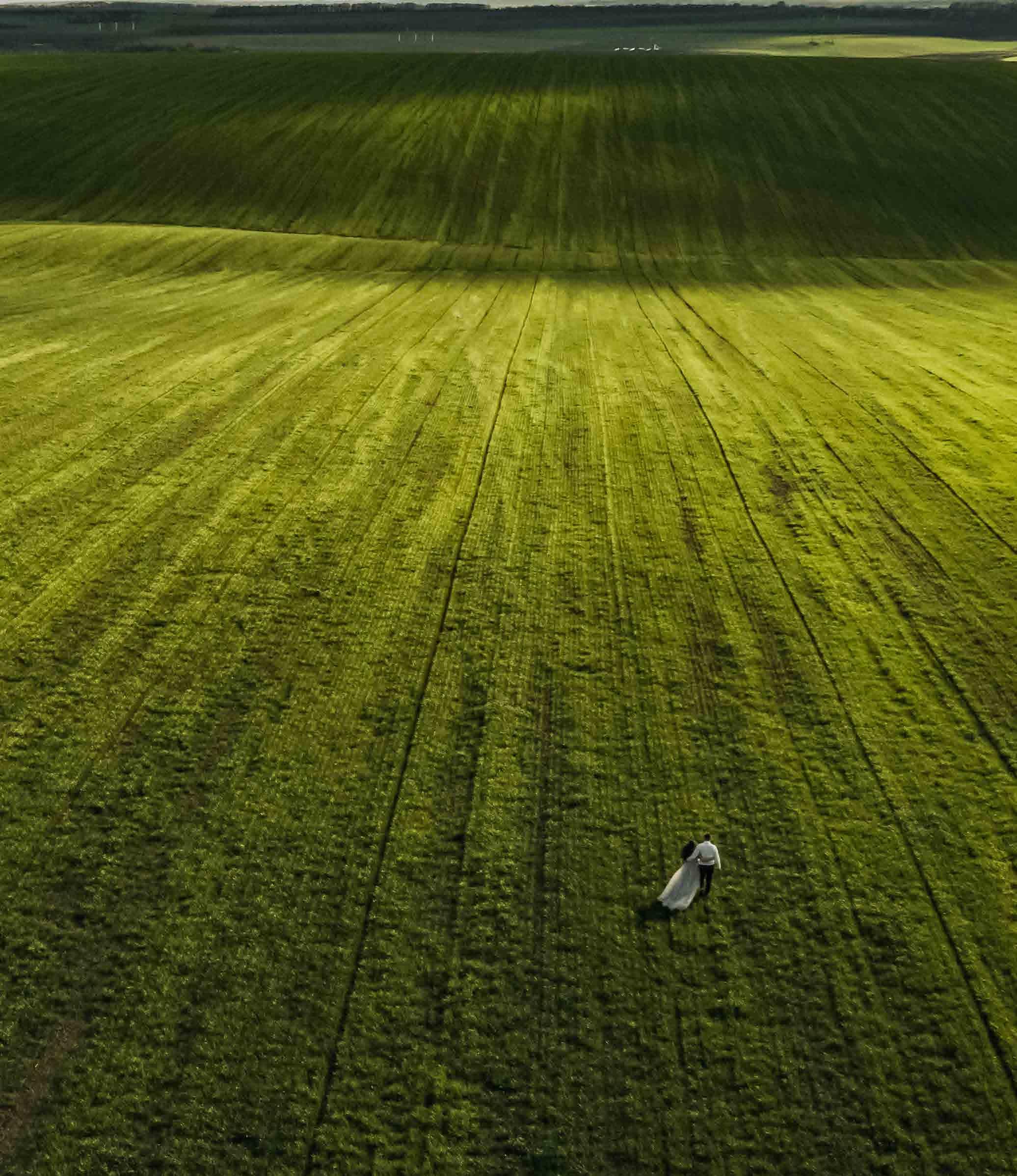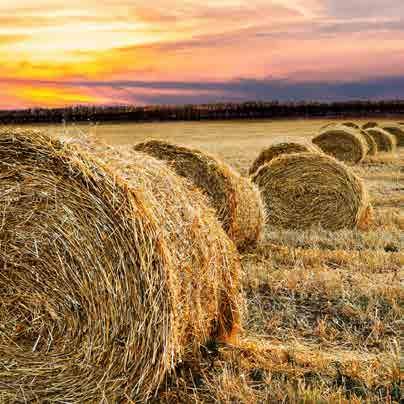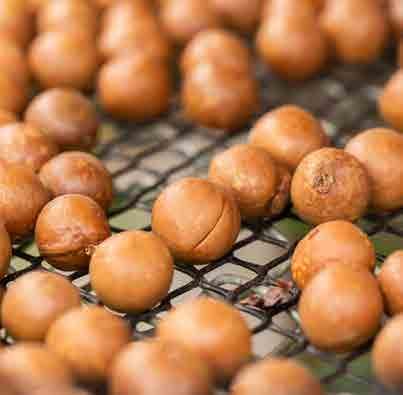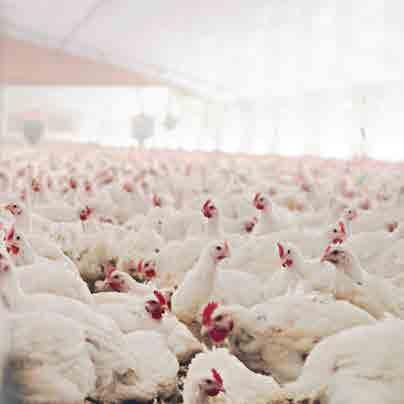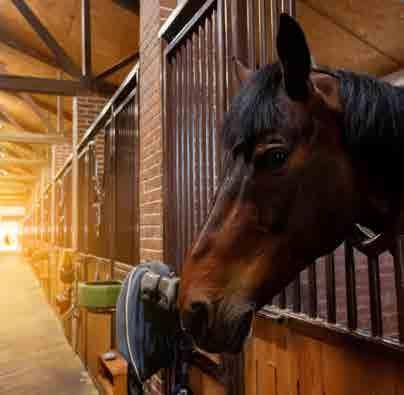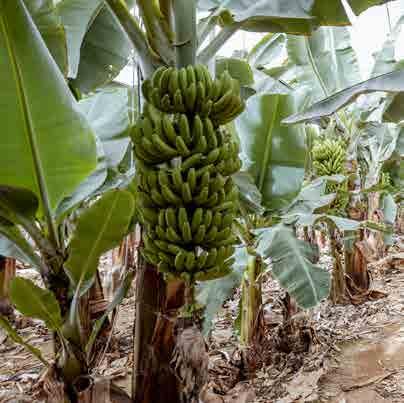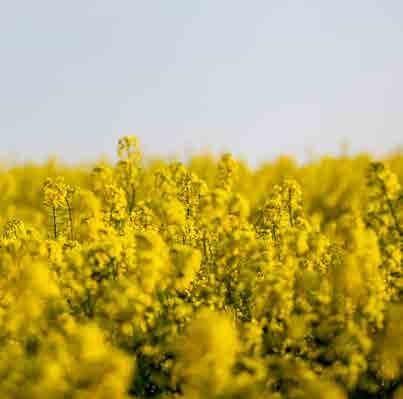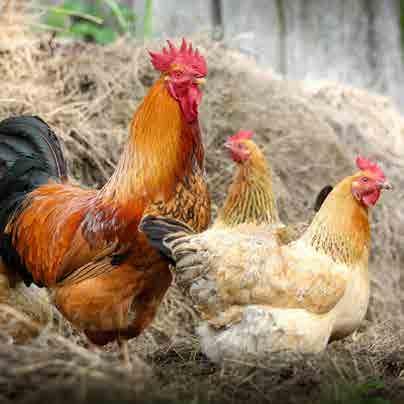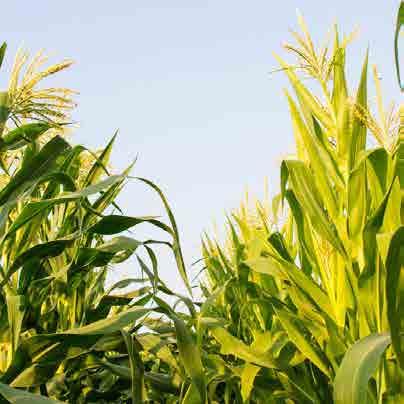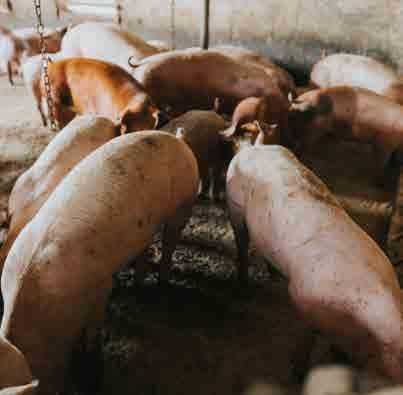




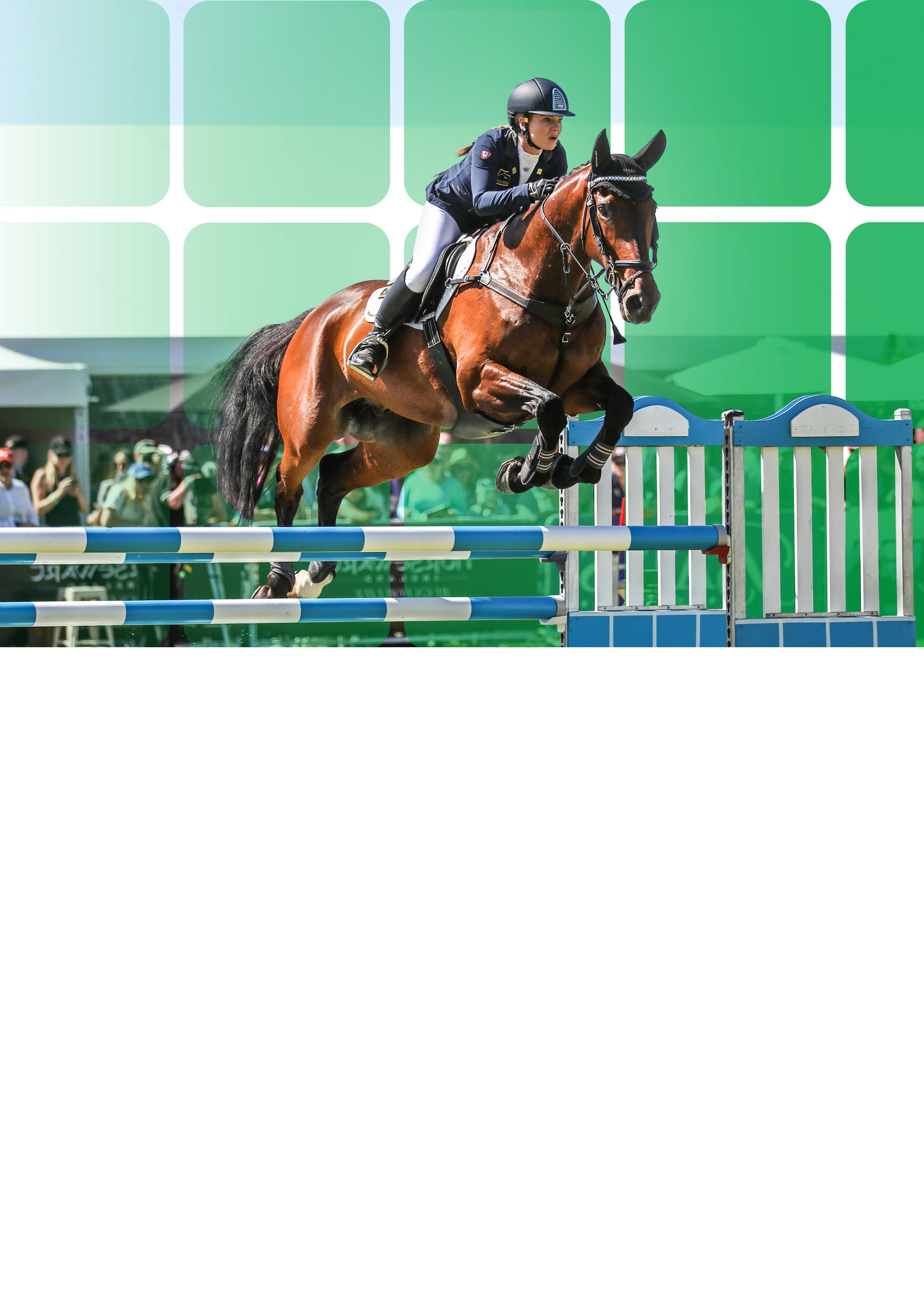
Equi-Jewel® is the ideal conditioning supplement to increase body condition, topline, and coat quality in breeding horses, performance horses, and horses being prepared for sale.
Equi-Jewel is a high-fat, cool-energy supplement that provides a safe source of calories for horses requiring a lowcarbohydrate diet or horses that are intolerant to grain due to tying-up or gastric ulcers.
Equi-Jewel contains KER BMC™, research proven to double the acid-buffering capacity of the stomach, which moderates stomach pH and reduces the risk of gastric ulcers. KER BMC also increases the buffering capacity of the hindgut by 54% to promote improved digestion and feed utilisation.
Learn more about Equi-Jewel at ker.com
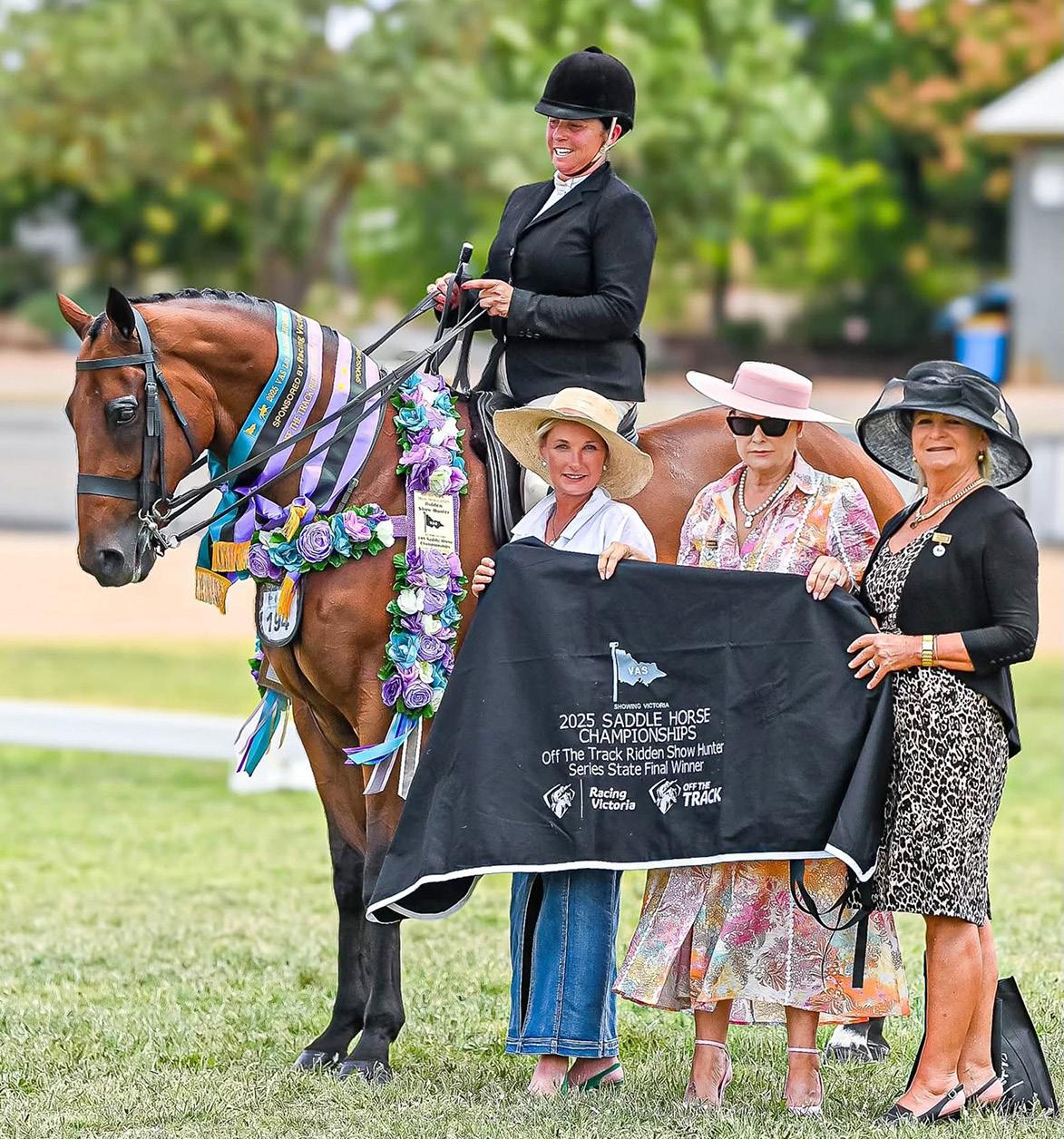
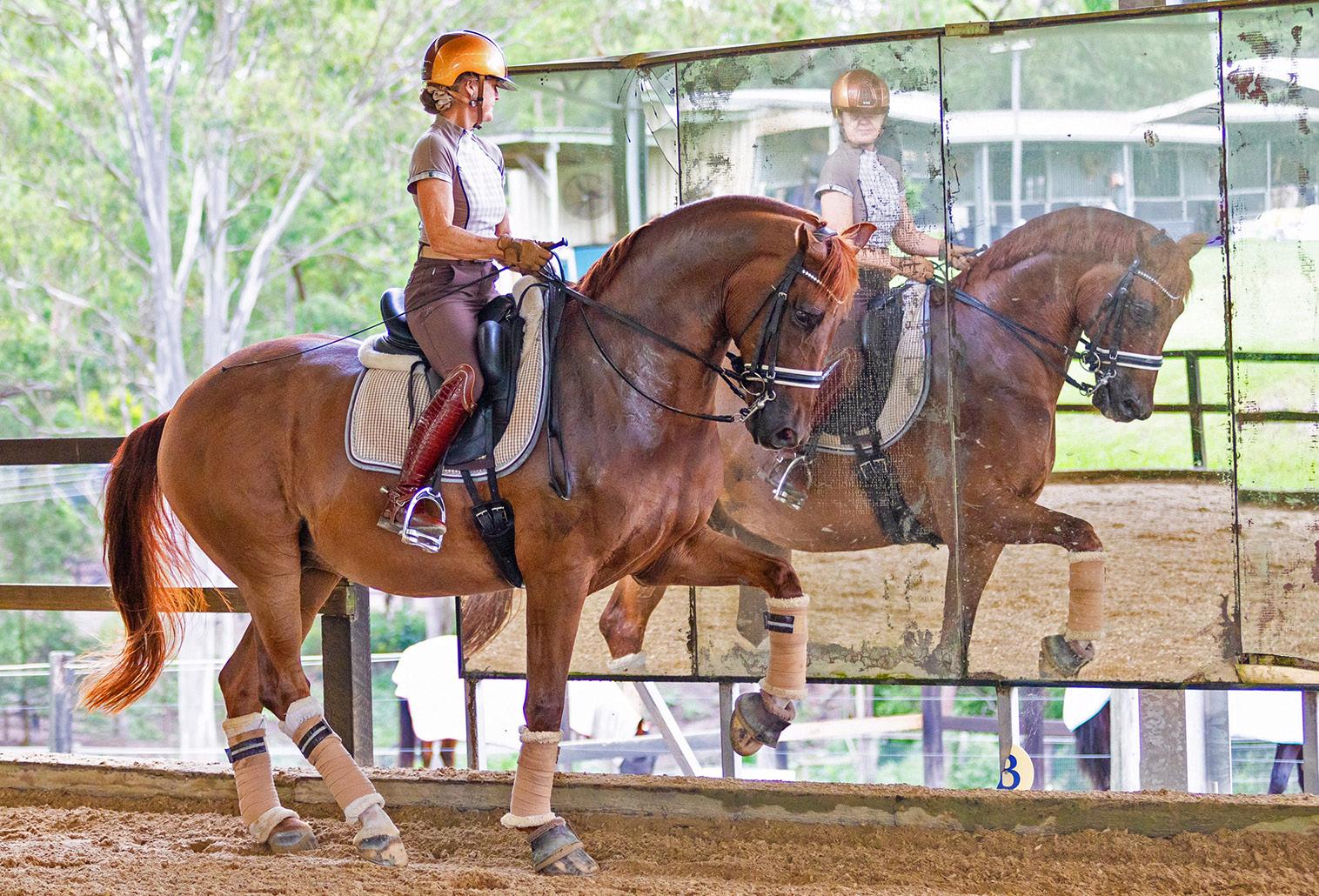
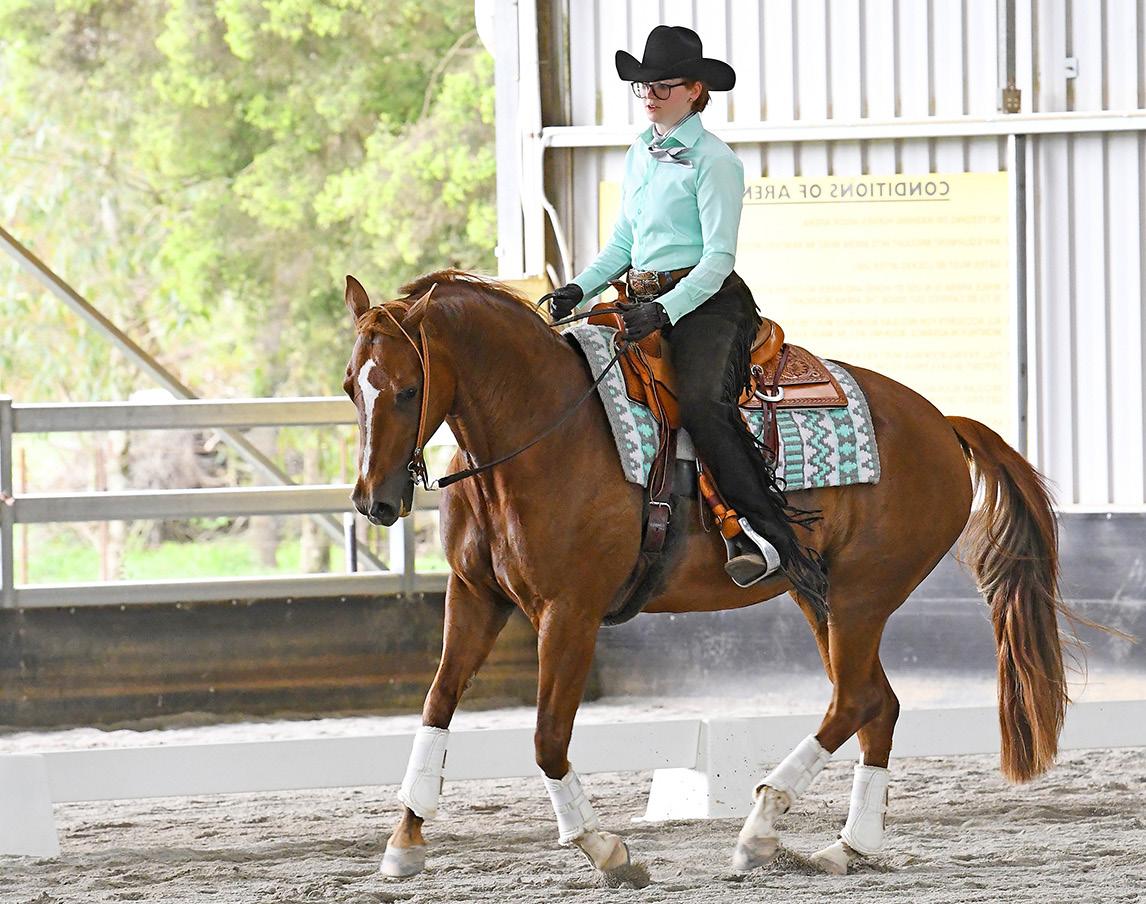
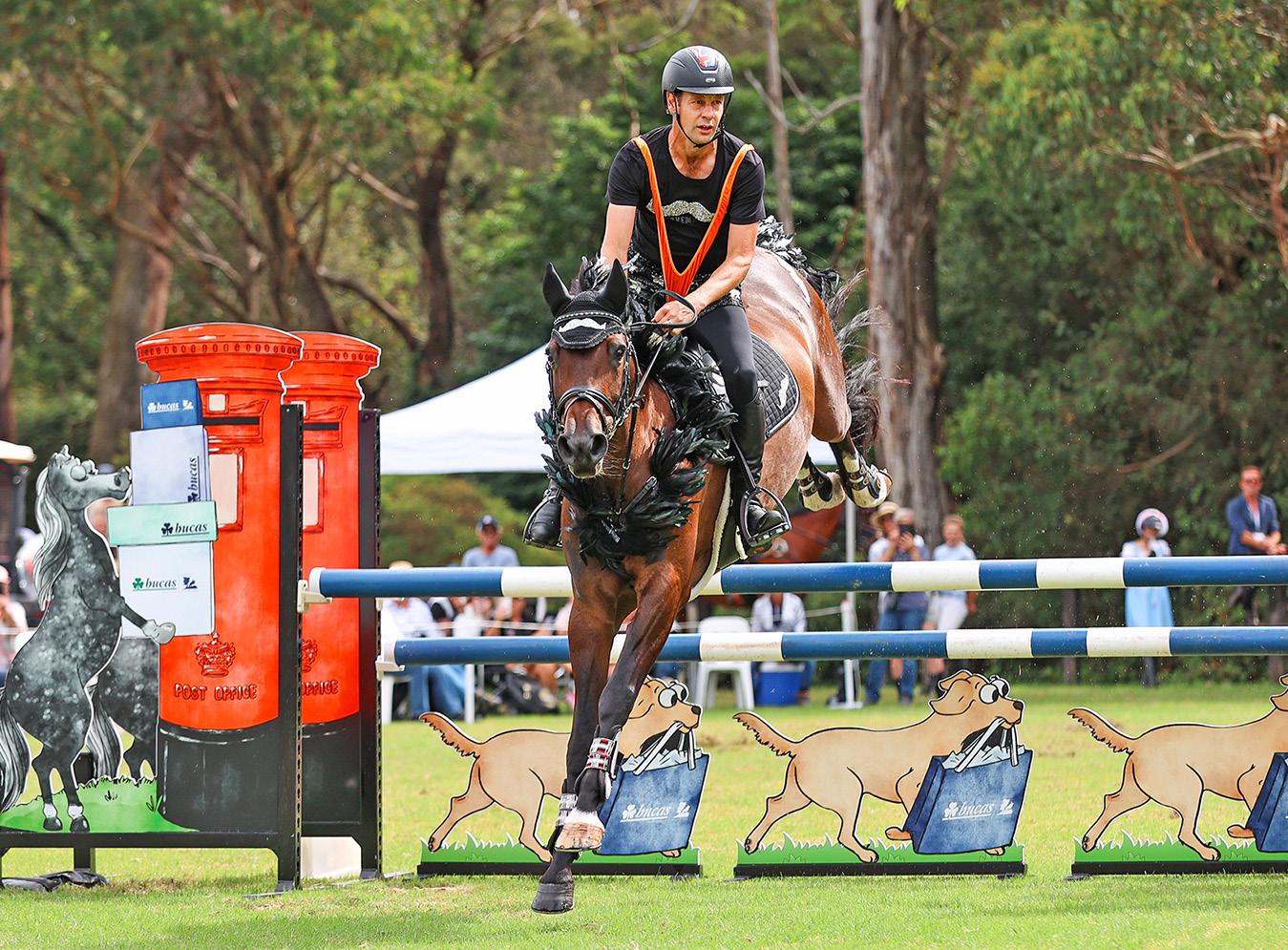
Editor Amanda McWhinnie
amanda@equestrianhub.com.au
Advertising
Fiona Todd 0414 760 067
fiona@equestrianhub.com.au
Website equestrianhub.com.au

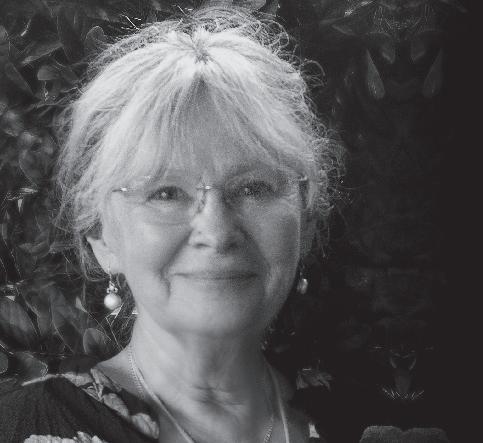
Fiona McIntyre
Fiona has advocated for OTT Thoroughbreds for over 30 years. She’s retrained numerous horses, and in 2020 her efforts were recognised with the Victorian Lady of Racing Award. Currently, she’s working with Racing Victoria as Operations Manager in the Equine Welfare division, is still retraining, and, as we find out in this month's Life After Racing, is blitzing the show ring with her beautiful OTT team.
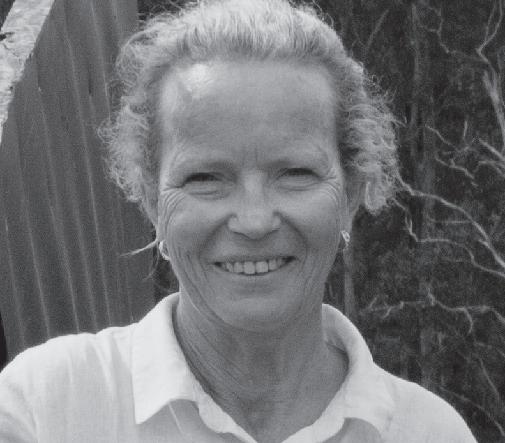
Larissa Bilston B.AgrSc (Hons)
Amanda Mac
As editor of Equestrian Hub Magazine, Amanda’s two longstanding loves, one for horses the other for writing, come together perfectly. Although much of her time is spent busily editing away behind the scenes, in this issue she speaks with Fiona McIntyre about her OTT show ring stars, follows up on Wallaby Hill's Movember fundraising drive, and learns all about the growing sport of Western dressage.
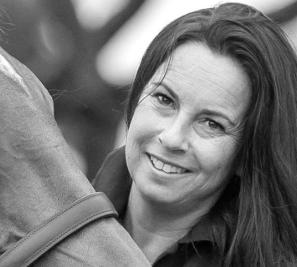
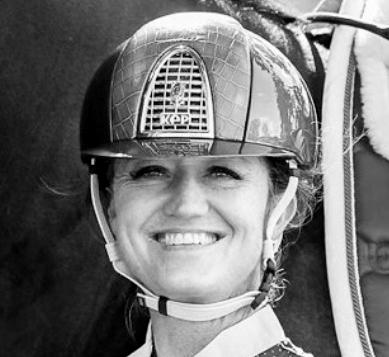
Christine Armishaw
Christine is a qualified EA Level 1 Coach and horse trainer who specialises in building confidence in women returning to riding and young riders getting started on their equestrian journey. Based at Otford Valley Equestrian, she runs clinics in NSW and NZ, and is a keen show jumper. How do you know when your schooling session should finish? Christine shares some expert tips in this issue.
Dr Jennifer Stewart B.V.Sc., B.Sc., Ph.D.
With over 40 years’ experience as a veterinarian in mixed and equine practice, Jennifer’s special interest is equine nutrition. She was a Senior Veterinary Officer with the Australian Department of Agriculture, Water and the Environment for 10 years, and a Biosecurity Veterinarian with the ACT Government for two years. In this issue, she explains why your horse needs all the essential amino acids.
Larissa is the Equine Nutritionist for Farmalogic, where she developed Equine Vit&Min and the Farmalogic Equine range. Her extensive experience is highly regarded by trainers, riders and owners who understand the importance of good nutrition. In this issue, she explains why adapting what you feed your horse through the change of seasons is important for their optimal health and performance.
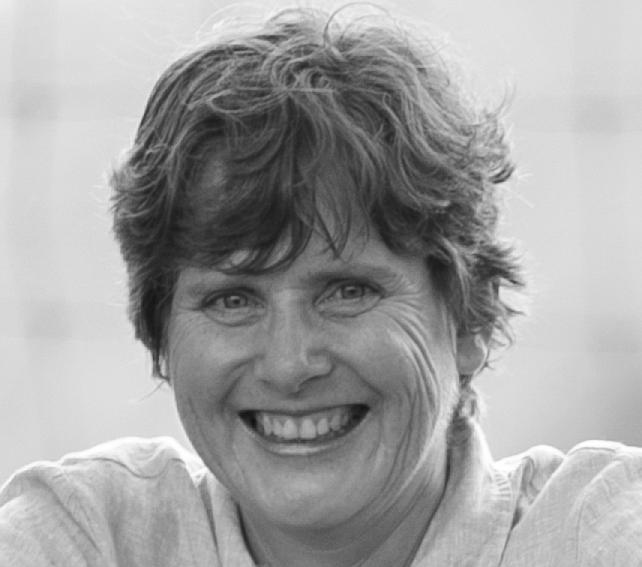
Dr Cat Marsden

Cat has had a lifelong interest in horses. She completed her veterinary degree at Charles Sturt University and after graduation worked in mixed practice for 18 months. Finding her main passion was horses, she completed a rotating internship at Goulburn Valley Equine Hospital. She has a particular interest in sports medicine, lameness and reproduction, and in this issue discusses eye health.
Nicole Tough An EA Level 2 Dressage Specialist Coach and National A Level Judge, Nicole has over 30 years experience in training, competing, judging and coaching. She enjoys presenting seminars and masterclasses, has trained in Germany, Spain and The Netherlands, and has produced nine very successful FEI horses. This month she explains why graduating to FEI dressage may not be for all horses or riders.
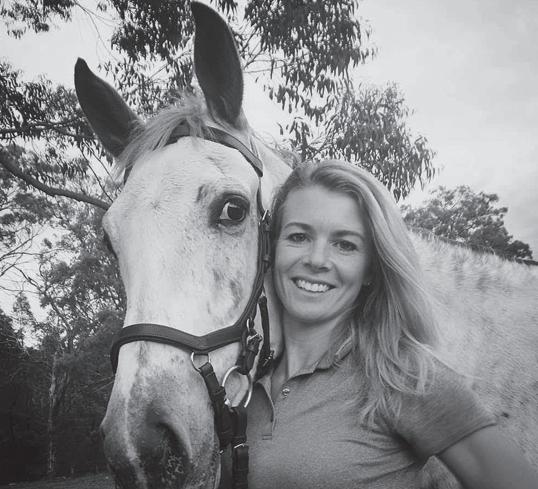
Michelle Terlato Michelle grew up with horses and has always loved them. When she’s not travelling the globe photographing the world’s top equestrian athletes, she’s home riding her own horses. It’s the behind the scenes and the unexpected shots that she likes the best, and in our Behind the Shot feature, she shares her favourites and explains what makes them so special.
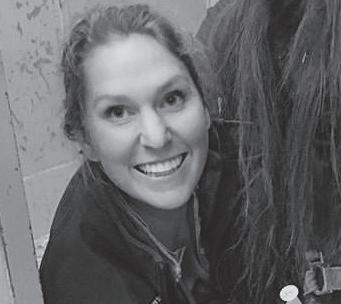
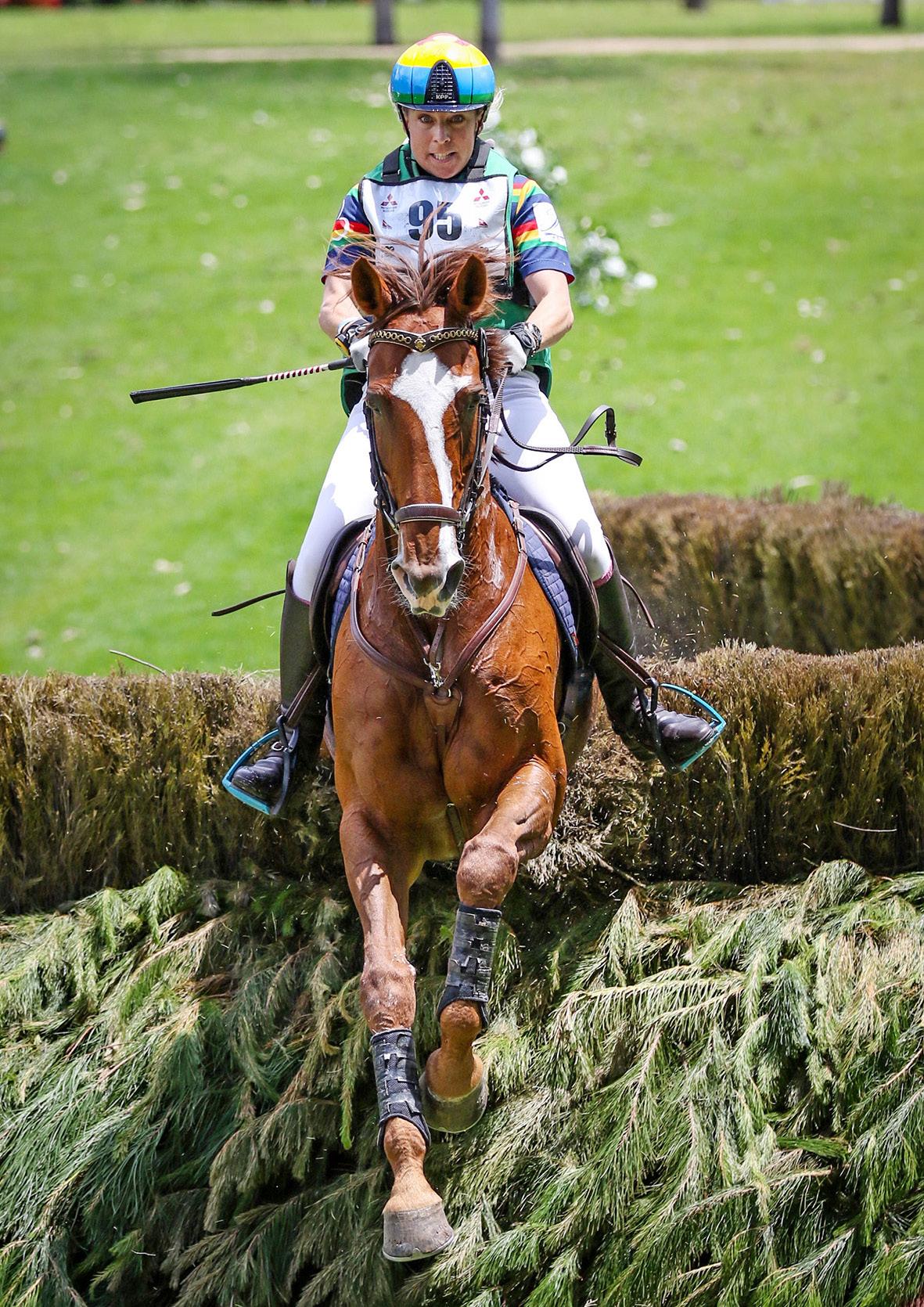

One of Australia’s top equestrian photographers, MICHELLE TERLATO travels the world capturing equestrian athletes in action. Each month she shares one of her favourite shots.
Rider: Megan Jones
Horse: Kirby Park Impress
Event: 2017 Adelaide International 3DE CCI4*
Location: Adelaide, South Australia
Camera & Settings: Canon 7D Mark II, Canon EF 70-200mm, f/2.8, ISO 500, 1/1250 sec
Challenges: The first time I attended the Adelaide International was in 2017, and I was so impressed by the cross country course running through parks, gardens and alongside the city of Adelaide. While the parklands are lovely, the shadows and speckled sunshine often make it hard to capture the action, so I
headed to where the crowds were - the water complex at Lake Rymill. That year, the entry to the water was down a steep grass slope, over two brush fences just one stride apart, and right down the centre with crowds on both sides and roughly another six strides to the water. The media were allowed to stand on an island in the lake, a wonderful spot to capture combinations coming straight at you. However, unless you have a long lens or stand behind a jump/obstacle (which is understandably frowned upon as it’s dangerous), this is not necessarily an easy angle to get a good result. I only had a 70-200mm lens back then and it really was the perfect option for this shot. Despite the f/2.8, it's crisp and sharp, which is often more difficult to achieve when riders are coming directly towards you, as the horse’s head or rider’s face tend to be in focus, but not the whole composition.
Why this shot is special: Despite not being able to see the crowds in this particular shot, I feel the atmosphere is reflected in Megan’s face. The line to the two brush fences and approach to the lake was not easy, and both Megan and Kirby Park Impress’ look of total concentration shows that they were completely focused on their job.
Debris from the brush fence is left in their wake as they gallop towards the water. The reins are flying, as are wisps of Megan’s hair from under her helmet. Her heels are down, eyes are up, and they are dead straight on their landing. This epitomises why Megan, who has won an Olympic silver medal and represented Australia on many occasions, is one of Australia’s top eventing riders.
In this CCI4* Megan and Kirby Park Impress finished in a very impressive 2nd place - and if you get the chance, be sure to visit Adelaide for the event, running this year from 1st to 4th May.

Michelle is available for event, commercial and private shoots. Visit Michelle Terlato Photography to view her impressive portfolio.
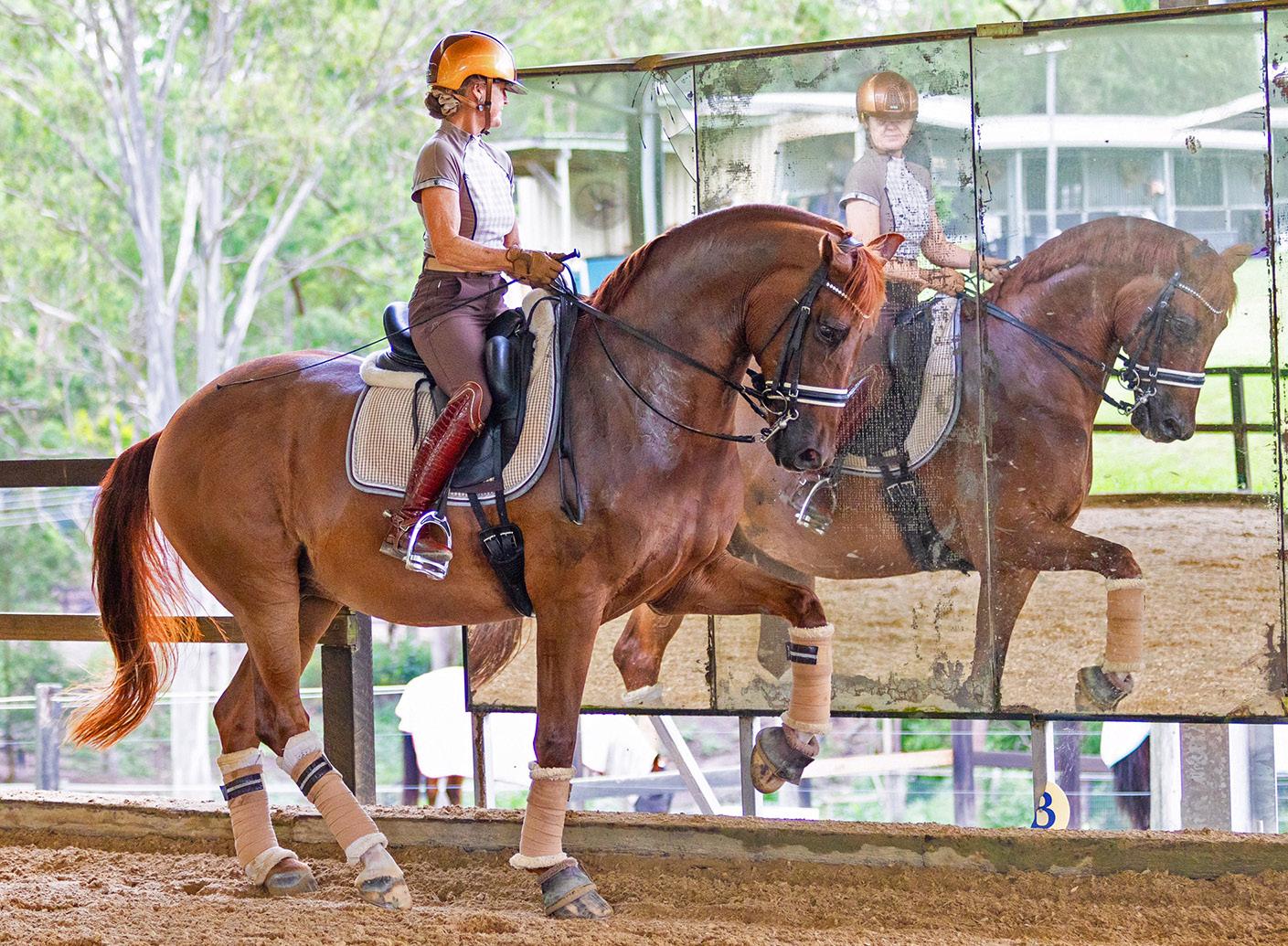

Most dressage enthusiasts are interested in finding a horse within their budget to train to FEI level. But, says NICOLE TOUGH, the biggest hurdle is time.
It usually takes around four years to train a horse to FEI level, assuming they don't suffer any setbacks such as lameness, injuries, or any other training interruption. Reaching Grand Prix level can take another year or two, and then even more years to improve.
And crucial to this end goal is the importance of using this time to our
horse’s best advantage. As horses age, they lose their natural ability to be supple, and if suppleness isn’t developed and maintained at an early enough age, it is more difficult to achieve later in life. Training a horse to FEI level requires the dedication and discipline of a trainer to patiently develop their horse into an elite athlete. There are no shortcuts.
Following the theory behind this series of articles, that dressage training is comparative to the concepts we use for human education, and just as a percentage of students won’t progress to university, likewise not all horses will progress into FEI training, and less again will achieve their doctorate – Grand Prix.
The human schooling curriculum is based on the development, cognitive and otherwise, of an increase in capability. This is the same for training horses in dressage. Characteristics evident in both species are that there are talented individuals able to exceed standard expectations, with some students taking longer to develop, and yet others who have limitations on their ability to train through the levels.
Similar to both, are the time delays and interruptions to life that can get in the way. These can affect the training milestones, but it doesn’t mean that either human or horse lacks the mental aptitude or ability to progress.

In dressage training, we apply our ‘through the level’ milestones by way of the Young Horse classes and National Level tests, from Preliminary to Advanced. Just as a child should know the alphabet prior to learning to read, a horse should know the correct reactions to the leg, rein, and seat aids, and the first three stages of the Training Scale before learning to leg yield. I have written about the importance of following the Training Scale, with its logical order of development, in the preceding four articles of this series.
In an ideal world, a healthy horse, purpose bred for dressage and with good early handling, can be started under saddle (kindergarten) at age three. Following our ‘through the level’ milestones, they proceed through Preliminary/Novice (primary school) establishing regularity in all three gaits, basic suppleness on circles and straight lines with acceptance of the contact. After graduating from primary school with the ability to lengthen and collect, they move on to elementary, performing basic lateral work, able to make smaller circles, counter-canter and lead changes through the trot and walk.
At the start of high school, our ideal horse adds to their existing knowledge with walk pirouettes, trot and canter half-passes, extended gaits and flying changes. At this point, experienced trainers have also begun schooling the idea of piaffe and passage.
Our advanced high schooler has started travers in canter on the circle (working pirouettes), and with this greater suppleness, can perform steeper half-passes, is putting more changes together, and has started the counter change of hand in half-pass. Remember, some horses might be delayed and others might have natural talent and find the work a bit easier.
Now at university, our ideal horse has the strength and understanding to progress to flying changes every two strides, half and full canter pirouettes, even steeper half-passes in trot and canter, and their piaffe and passage is starting to look like piaffe and passage. They have fully
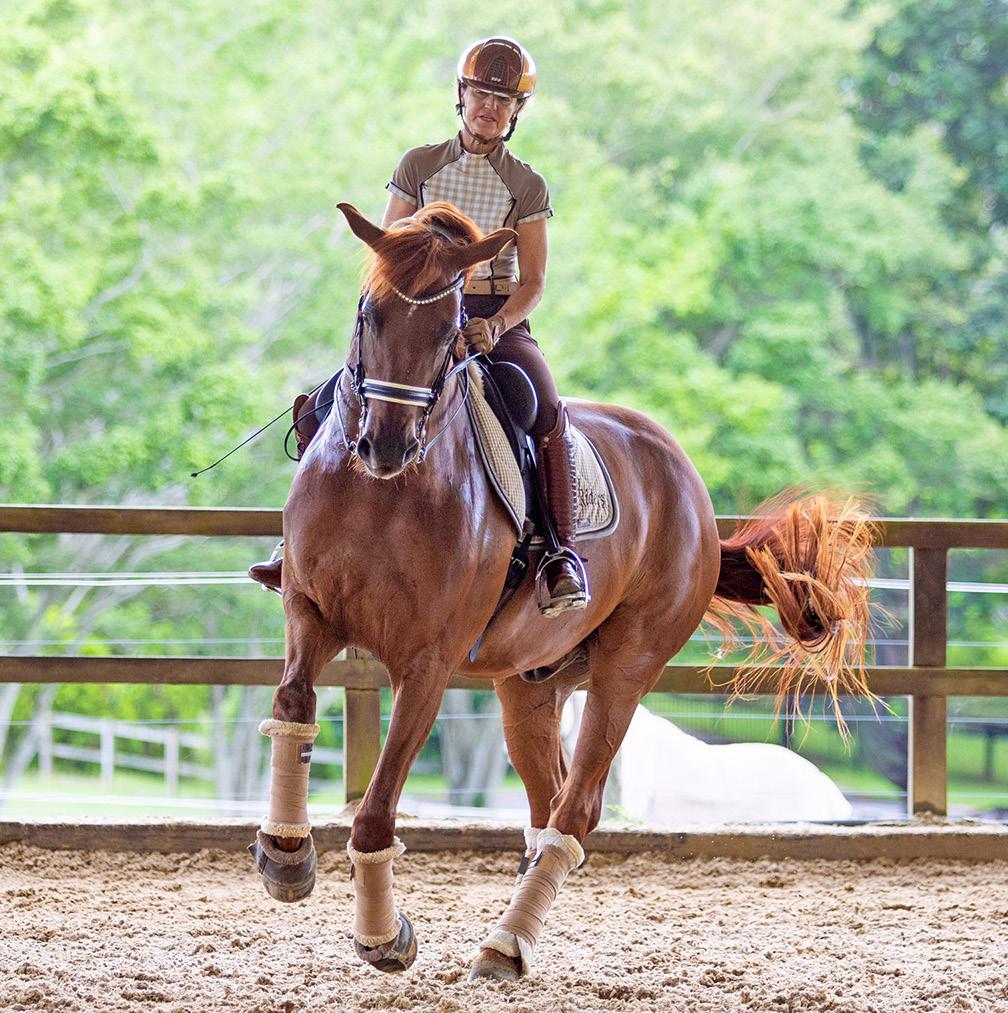
ABOVE & LEFT: Achieving more advanced dressage movements takes time and aptitude - and nine-year-old Leopold, owned by Karin Gordon, has proven to be very talented at the higher levels (Images by EK Photography).
developed extended gaits and can easily perform canter-halt transitions.
In a perfect world, our ten-year-old is on track to achieve their doctorate. They may not be quite ready, strong and balanced enough to perform the Grand Prix test in competition, but they have all the ingredients to keep developing the confidence, collection, strength and suppleness to do the Grand Prix from start to finish.
It is imperative to understand that:
w If your horse is not schooling Grand Prix by age ten, you are in the majority; and if your horse is, this doesn’t necessarily mean they will be a very good Grand Prix horse.
w There are many reasons our horse may not progress to FEI and achieve Grand Prix level, but this doesn’t mean they have no purpose or value.
w A horse who has never been educated can start learning dressage later in life, but they may not be able to be competitive FEI horses.
w Using dressage training to train a horse to be a well-balanced and enjoyable riding horse and training a horse to be a competitive at Grand Prix level are not the same thing.
Basically, all horses should be appreciated for what they can do, and if our horse is not following the ideal timeline, it is not a failure. As I mentioned previously, horses progress at their own individual pace.
Knowing what the training milestones are, and why their timing is important is a crucial part of being a good trainer. The best (and worst) thing about dressage is there is no finish line. We will always want to improve, and we need a lifetime to do it. But most importantly, there is much fun to be had and so much to accomplish competing at every level - Grand Prix isn’t for every rider or every horse.

For more information on lessons or a clinic with Nicole, visit Nicole Tough


How do you know when your schooling session should come to an end? It's an important skill to have, says CHRISTINE ARMISHAW
Iwant to preface this article by saying that an hour-long training session is too long. And that’s worth stating upfront because I’ve noticed many people really don’t know how long to ride their horse, but for some reason, they think one hour is the magic number!
But if you're genuinely, properly schooling your horse - as opposed to being out on a relaxed trail ride - and not giving them sufficient breaks, then in most cases an hour is too long for the horse both physically and mentally.
1. What are you training for? Think about what you’re training for.
For example, if it’s dressage, you’re training for a six to eight minute test at the most, not, thankfully, a 60 minute marathon! Yes, you have to train at home for all the components, the movements, suppleness, the transitions and so on, but overly long training sessions potentially put your horse at higher risk for injury and for arena sourness. We’ve all encountered a horse who makes it clear they don’t want to see us today if we’re going to make them train again! Which is why variety is good. Mix flat work and pole work up with other exercises and, if possible, get out of the arena too.
When I’m giving an hour-long lesson, I’ll break it up by asking the rider to stop so I can explain what we’re doing and show them what I mean. When learning something new, breaks of 10 to 30 seconds allows time for a scratch, lick and chew, and for both horse and rider to process the information and catch up mentally.

2. Teaching something new: If you are teaching a horse something new - and if you’ve got a young horse you’ll likely be teaching them a lot of new things - it’s much better to focus on short and sweet so that it doesn’t become mentally and physically exhausting for them. I normally ride a horse for about 25 minutes. However, if the horse takes 15 minutes to settle and get into work mode, then I might ride for another 25 minutes to work on whatever I’m teaching them. So, there are variations to the length of time depending on what's going on.
3. The rule of three: When you’re teaching something new, your aim is to get what you're asking for three times in a row. So, keep my rule of three in mind: if they managed to give you what you were asking for the first time, it was potentially a fluke - maybe they did it accidentally rather than on purpose; the second time, well, you’re probably actually starting to get somewhere, especially if it’s the second time in a row; and if you get the right answer three times in a row, then that’s becoming a learned behaviour – your horse is saying ‘I think this is what you want’ and they're offering it to you.
And if they offer that three times in a row on both sides, even if it’s in the first 10 or 15 minutes, great! Jump off! And that’s especially true if it’s a young horse. Don't keep asking them to repeat what they’ve learned, because you'll actually start to undo all the good work you’ve put in.
4. Quit while you’re ahead: This tip is a really important one, and perhaps is something that only comes with experience. So, the training session is going really well and you're having a great time, so much so that you want to keep going and going. But you have to know when to say when!
Perhaps you've put the jumps up, and your horse is doing a great job - but don’t keep pushing until they start to
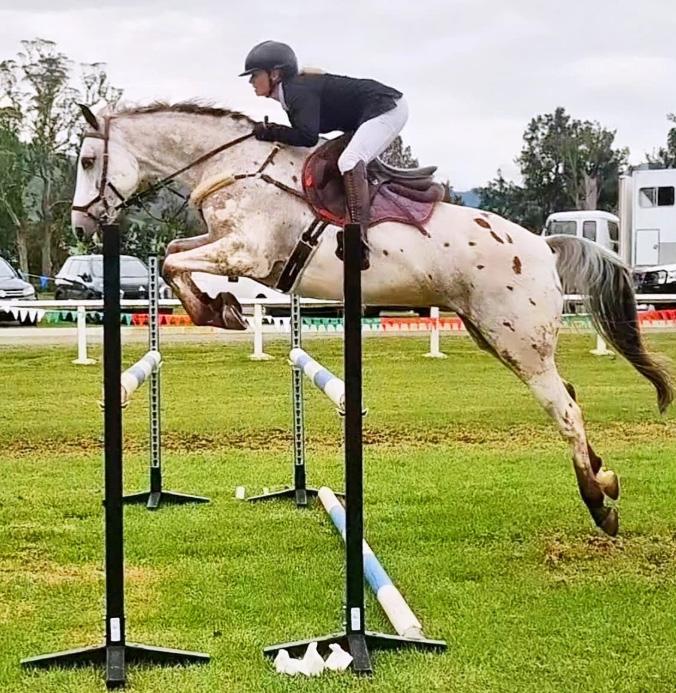
ABOVE: Christine and Myal High Lyric took 2nd place in their 1.05-1.10m class. Christine consistently trains her horses 10cms higher than they compete (Image by Amelie Scott). LEFT: Know when it's time to end the session and jump off.
mess it up because they’re getting tired, or it’s something that they're just learning, or you’ve made it more challenging. Before you do it again, ask yourself if you’re certain that the result will be at least as good as it was before, if not better, because if you've got doubts, now’s the time to get off before you undo all that good work. You should always finish feeling like you could have done more, not that you should have done less.
5. When less is more: Feeling that you could have done more also applies to the classes you choose to compete in. To put that into context, you should be jump training at 10 centimeters higher at home than the class you’re aiming for, and with dressage, at the level higher than the competition you’re entering. And that’s a good rule of thumb to use when you’re wondering what classes to enter. You want to go
to that competition and come away thinking I could have gone up a level, rather than I should have entered the lower class.
6. The last minutes matter: You’ve ridden for 30 minutes just to get five good minutes at the end. But this does not mean that you had an awful ride for 25 minutes! What you did was to work quietly away at whatever you were doing so that the last five minutes were good - and then you hop off on a positive note. And that’s the key takeaway: as long as you finish on a positive note, that will be the feeling you come away with – and just as importantly, it will be the last thing your horse remembers. How you finish really does matter.

Christine Armishaw Equestrian offers a variety of coaching and other equestrian services at her Otford Valley Equestrian Agistment & Training Centre
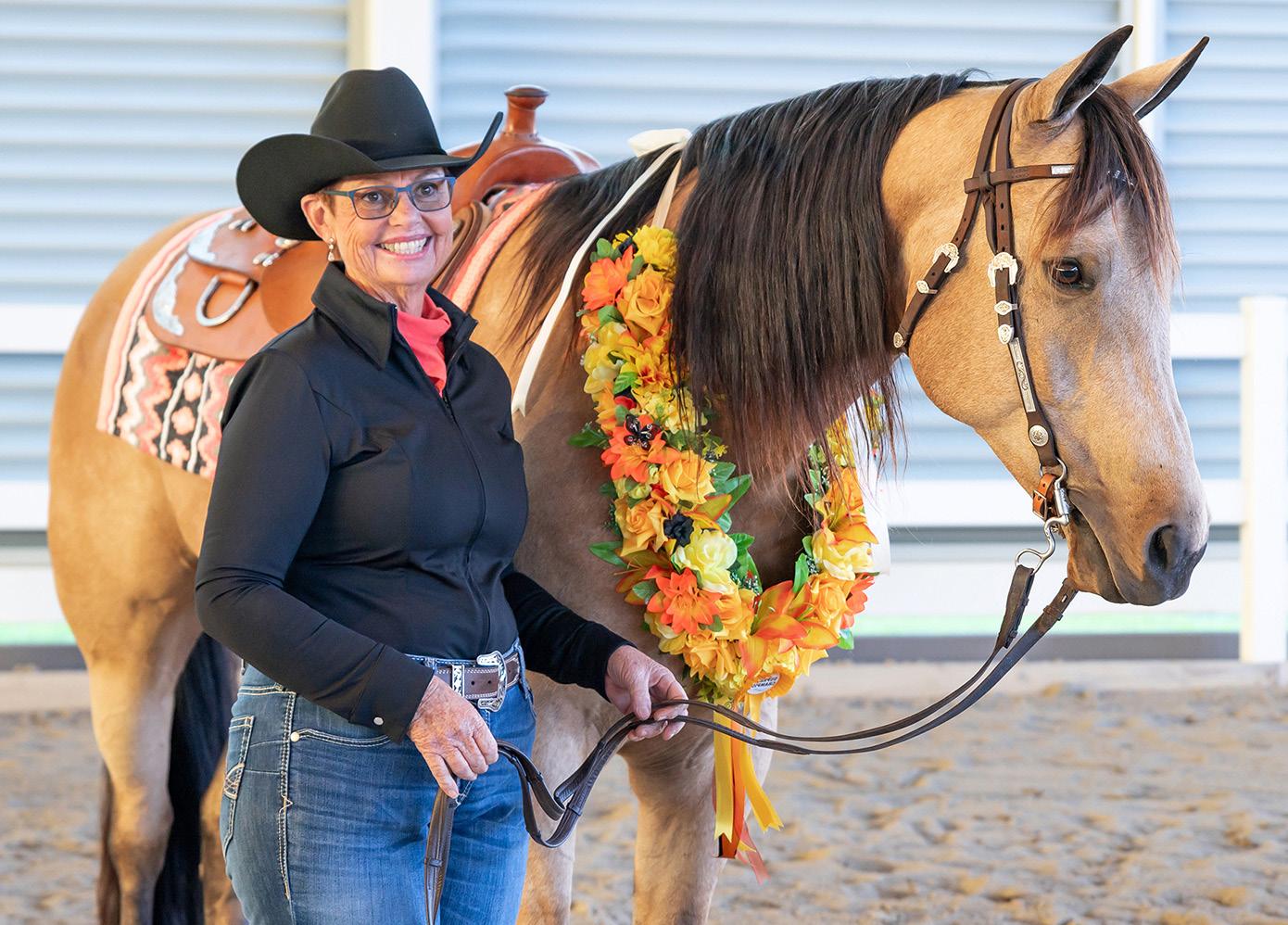

Since arriving in Australia over a decade ago, Western dressage has gone from strength to strength, writes AMANDA MAC
How much do you know about Western dressage? If the answer’s not a lot, stay with me, because there’s plenty to learn - and perhaps a good place to start is with a potted history.
A relatively new discipline, Western dressage was developed in the US with the goal of combining traditional
Western riding with the elegance of classical dressage, and in 2010 was formally established by the Western Dressage Association of America. Several years later, Ann Hughes introduced the sport to Australia, and became the driving force behind first founding the Western Dressage Association of Western Australia, and in
2014, the Western Dressage Association of Australia (WDA-AUS), now the sport’s national governing body.
Similar to classical dressage, Western dressage has a systematic and progressive Training Scale, with a focus on developing lightness, suppleness and responsiveness in the horse, as well as a harmonious partnership between horse and rider. One of the main differences however, is that Western dressage encourages a little more relaxation and less intensity in the partnership and also lends itself to a broader range of horse types and breeds.
In Australia, competitions are held at regional, state and national shows, with six levels of competition each incorporating five tests. Riders compete in open, youth and amateur divisions, and judges assess each horse and rider along much the same lines as an English dressage judge would.

Teresa Russo has been involved in all things Western for quite some time. Before stepping back at the end of last year due to family commitments, she had been a WDA-AUS national board member for five years, serving as chairperson in the final two years, and for 14 years was president of the North Queensland Quarter Horse Association.
Interestingly, she has competed in Western dressage since 2016, but has also ridden in English tests, on one occasion competing at the Queensland State Dressage Championships with her Quarter Horse. She explains that crossing over between the two disciplines is relatively easy: "Western and English dressage competitions are run in much the same way, with the same arena, letters, and scoring method, and, with the exception of the Western dressage side pass, which is executed at a walk, many of the same movements."
However, since she began riding as a child, her interests have tended towards the Western disciplines, including performance and reining, plus a successful career in cutting. So there’s a strong pull towards Western dressage. “I like the fact that any type or breed of horse can give Western dressage a go and excel in the sport," she says, "and I think the Training Scale creates a strong foundation for horses to do well in other disciplines.” Teresa competes her cutting horses in Western dressage, and says she's noticed benefits for both their trainability and their mental capacity.
Another strong advocate for the sport is Vivian Wearing, a highly regarded coach and clinician across many disciplines who specialises in Western dressage and has been integral in the sport’s growth throughout Australia.
With early experience in Western and English disciplines, she is particularly
drawn to the way Western dressage integrates aspects from both. “Western dressage horses are trained to work from behind and to be active, forward, rhythmic, uphill, and calm. It's this gradual training that helps them feel composed and balanced, and allows them to achieve self-carriage on a light contact,” she says. " I also greatly appreciate that this sport enhances the mental and physical wellbeing of horses, while aiding riders in developing accuracy and mindfulness."
Add to this Western dressage's inclusivity for all breeds, and the rider's freedom of choice when it comes to tack and attire, and that's a lot of boxes ticked.
Louise Harris is of much the same mind as Vivian. With her horse Too Much Hootch, she competes at Levels Two and Three, and regularly takes out championship, state and national awards. For Louise, part of her love of

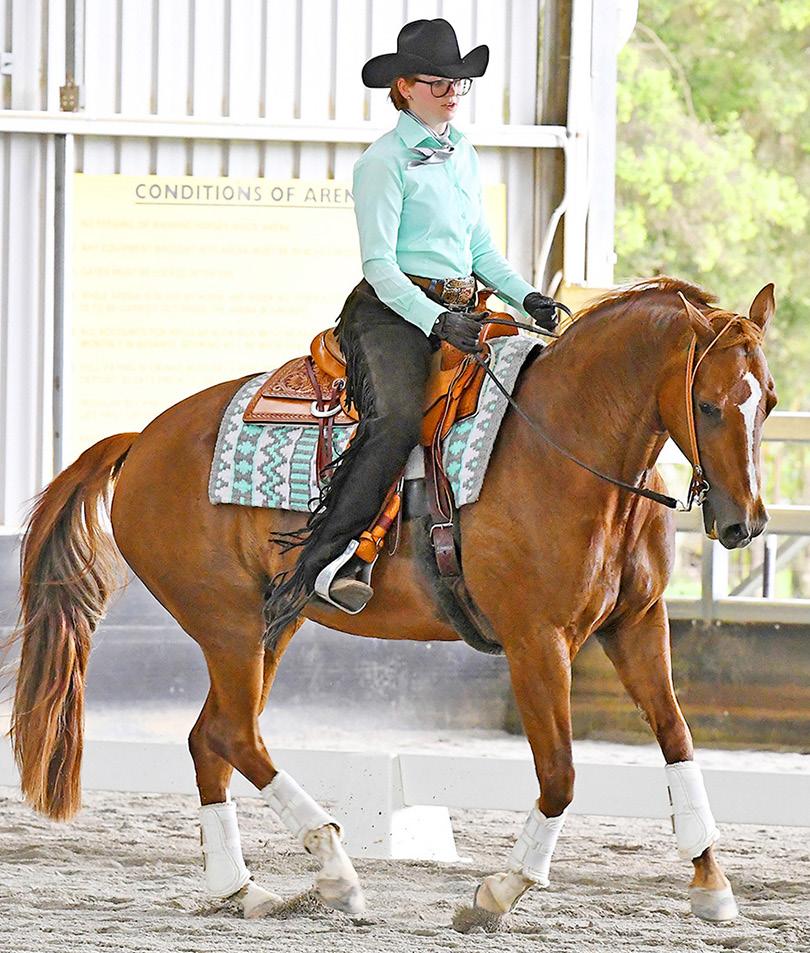
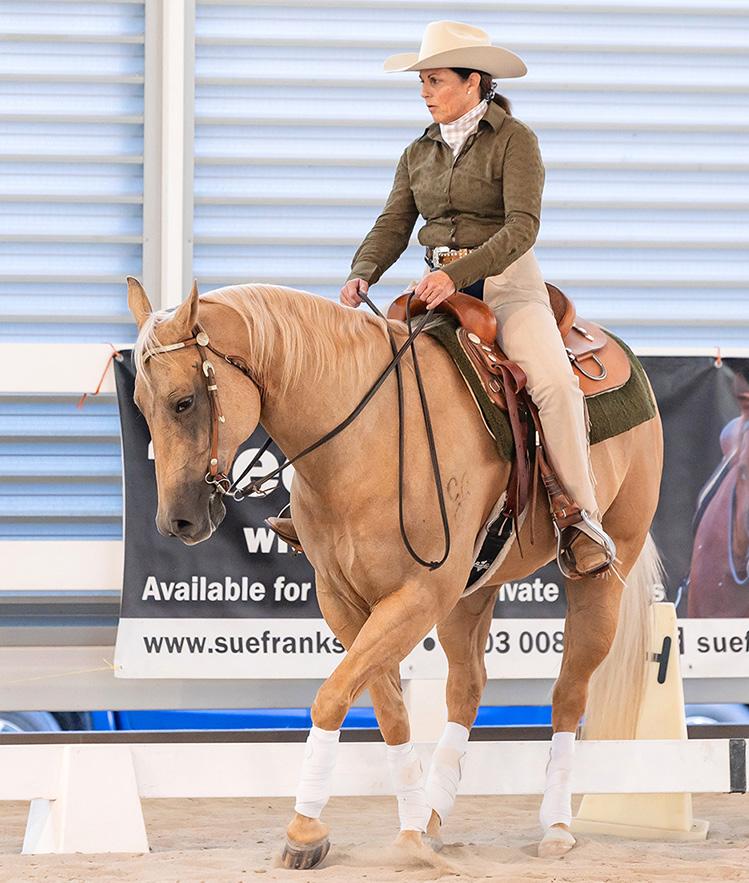
the sport centres on the respectful way horses are trained and brought into a competitive environment. “As you work your way up the levels, the discipline’s core values encourage the horse to become confident, soft and relaxed, as well as promoting a genuine connection between horse and rider,” she explains. In case you were wondering, that approach is actually written into the WDA-AUS Rule Book, where the ideal Western horse is described as responsive, confident, willingly guided and performing the required movements correctly with authority and finesse.
The horse should also demonstrate a ground-covering stride compatible with their individual conformation, with the hindquarters engaged and self-carriage in evidence. Emphasis is placed on the head and neck being carried in a relaxed, natural position appropriate for the horse's confirmation and level of training. Judges require the rider to be 'confident, balanced and effective', showing the empathy and tact needed to encourage the horse to perform at their best,
and for horse and rider to work in harmonious partnership.
Tack in Western dressage is, rather obviously, Western. Either a Western or a swinging fender stock saddle can be used, but no English saddles. The bridle should be Western or stock style, and snaffle bits, bosals and curb bits with a light rein contact are all acceptable. And yes, nosebands are allowed, but cavesson's only - not a drop noseband in sight. Finally, the rider should be dressed in Western style clothing and boots, with either a Western hat or a helmet, the choice is yours.
The recent appointment of Carol Paterson OAM as Chair of the WDA-AUS holds great promise. She’s a WDAAUS Western dressage judge, as well as an Equestrian Australia dressage judge with 40 years’ experience. A past Chairperson on the board of Pony Club Australia (PCA), she is currently a PCA Assessor, has mentored China Pony Club since its formation in 2015, and regularly travels to China to act as an assessor and mentor for the club.
Top of her agenda is further developing Western dressage as it continues to grow in Australia, noting that the sport is particularly popular among women: “Whilst we encourage everyone to participate, many of our riders are females seeking to enhance their horse’s education and their own riding ability within our supportive and relaxed environment."
For Carol, following the Western dressage Training Scale is both effective and rewarding, with riders welcoming the feedback provided by the judges on their test papers. "Add the glamour of bright saddle pads and coordinating western outfits and you have the ingredients for a fun and rewarding day of competition,” she adds.
There's something inherently appealing about Western dressage's colourful and relaxed approach, don't you think? And if you're interested in learning more, there's no better place to start than at WDA-AUS

HARNESSING THE POWER OF SUNFLOWER SEEDS, AN ALL NATURAL SUPERFOO D
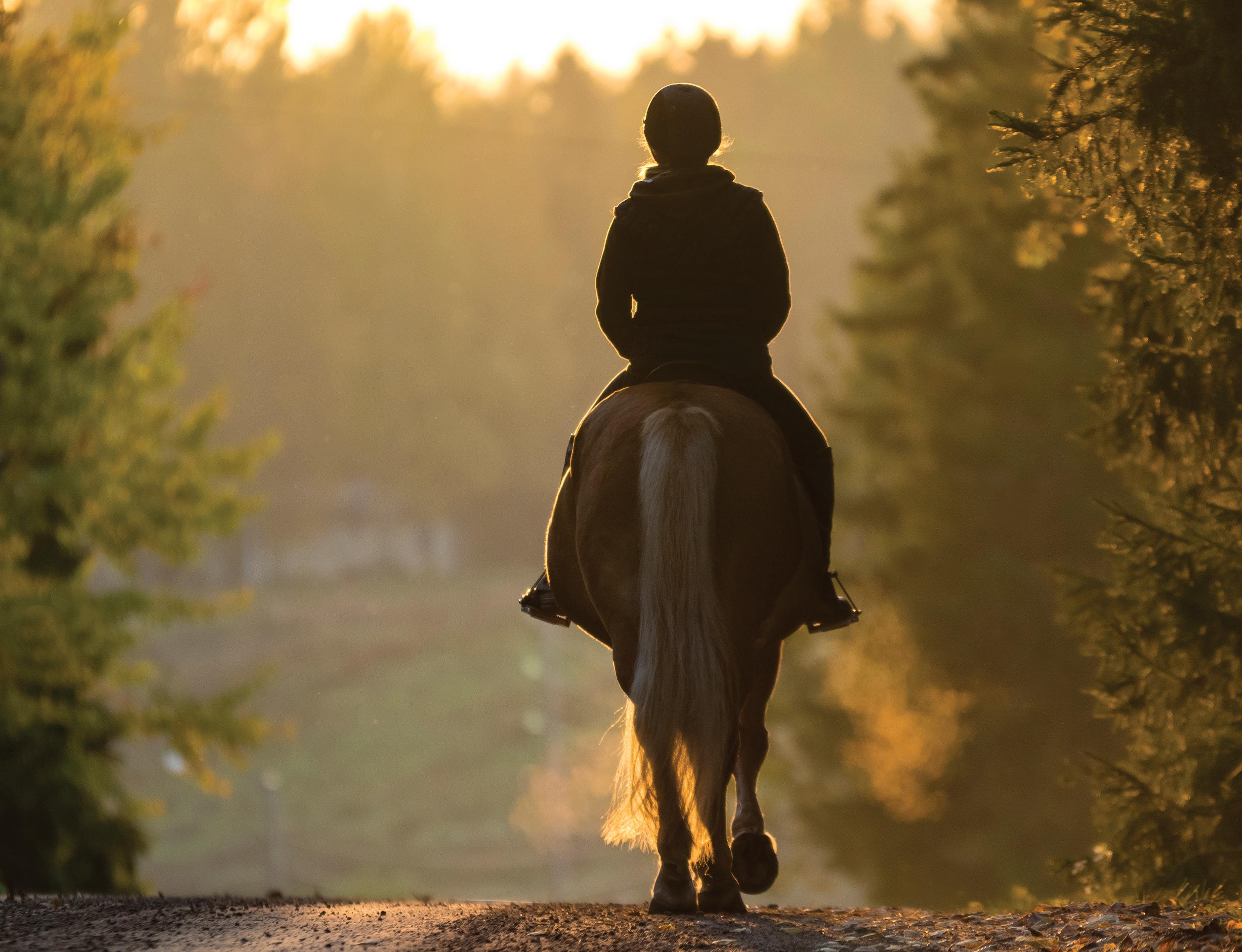
Omega Feeds has formulated a palatable, high fibre, low starch feed that contains a balanced blend of vitamins and minerals to ensure optimum health and vitality. No-Grain Gold is suitable for ponies, spellers and horses in light to medium work.
High Fibre: For gut health and cool energy.
Non Pelleted: Horses spend more time chewing which stimulates saliva production and in turn buffers the stomach and protects it from ulceration.
Low Starch: Reduced risk of digestive upsets and metabolic conditions.
Balanced blend of vitamins and minerals: For optimum health and vitality.
100% Australian, proudly supporting Australian farmers
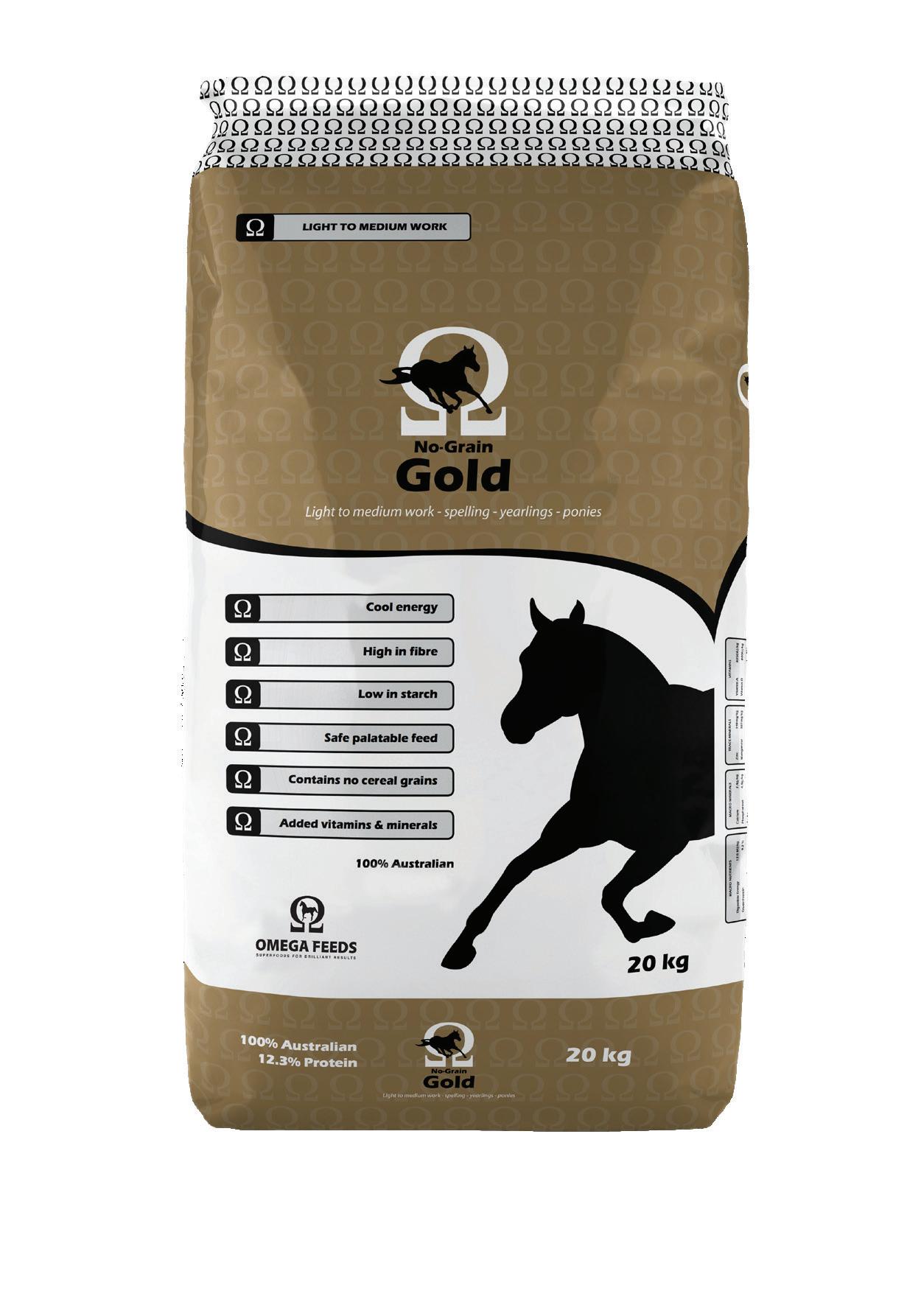
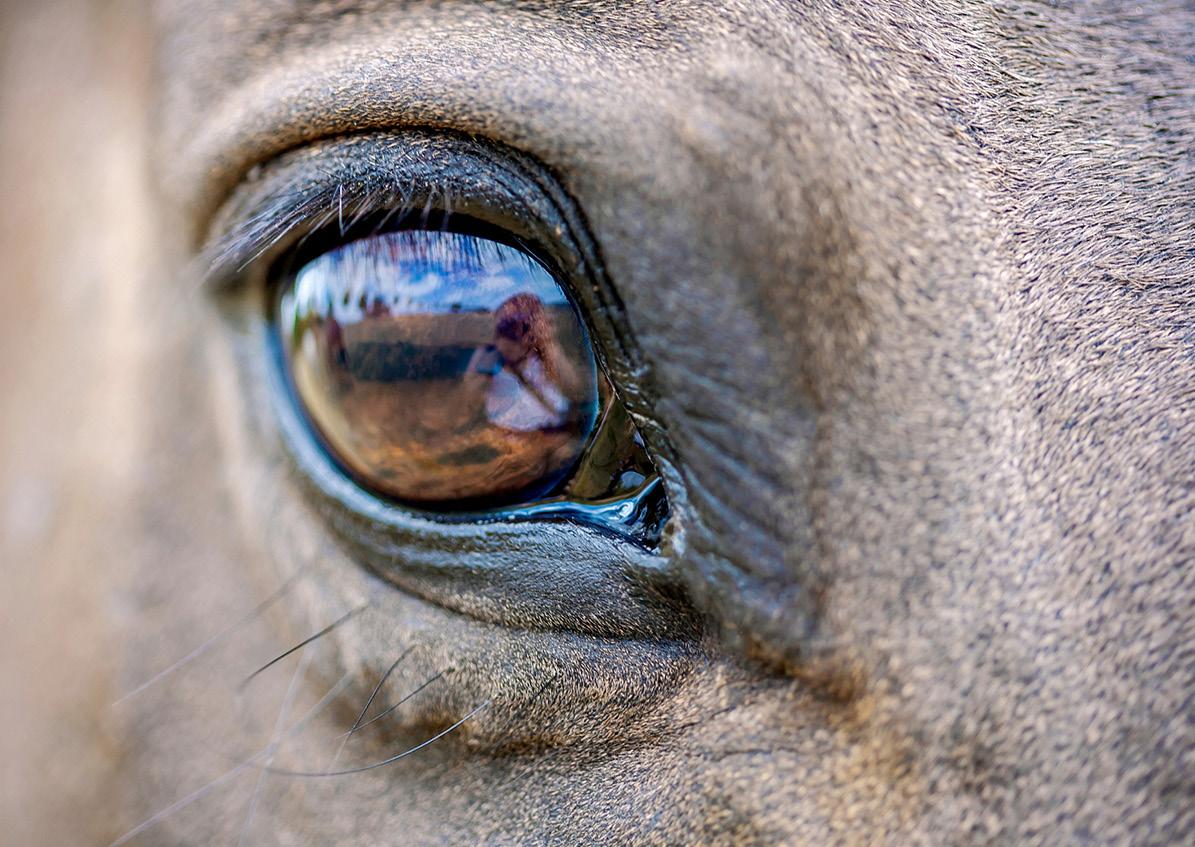

The health of our horse’s eyes is as important as our own, and this article from DR CAT MARSDEN makes for informative and interesting reading.
It’s not uncommon for vets to be called out to a horse with a sore eye. The position of the eye and horse’s flighty disposition can often predispose them to eye injuries.
Typical signs of a painful eye include;
Ocular discharge (eye mucous)
Photophobia in which the eye
is closed up or squints due to a sensitivity to light
Swelling around the eye
Corneal oedema (a cloudy appearance to the eye)
Reddened appearance of the conjunctiva, the transparent mucous membrane that lines the inner surface of the eyelids and (with the exception
of the cornea) the outside surface of the eyeball.
The most common cause of a painful eye is a corneal ulceration, an open sore on the cornea. This is caused by trauma to the outermost surface of the eye, causing loss of the most superficial surface of the cornea. The cornea in horses is approximately 1mm thick and as such, is very easily traumatised. If the ulcer is simple and superficial (shallow), it should heal within seven days with minimal scaring. However, equine eye ulcers can rapidly become infected, which is considered an emergency. If left untreated, an infected corneal ulcer may form a melting ulcer (when the cornea becomes soft and jelly-like), a descemetocele (a protrusion in one of the layers of the cornea), or may even cause the eyeball to rupture. As such, if you notice any of the clinical signs listed above, you should call your vet immediately.

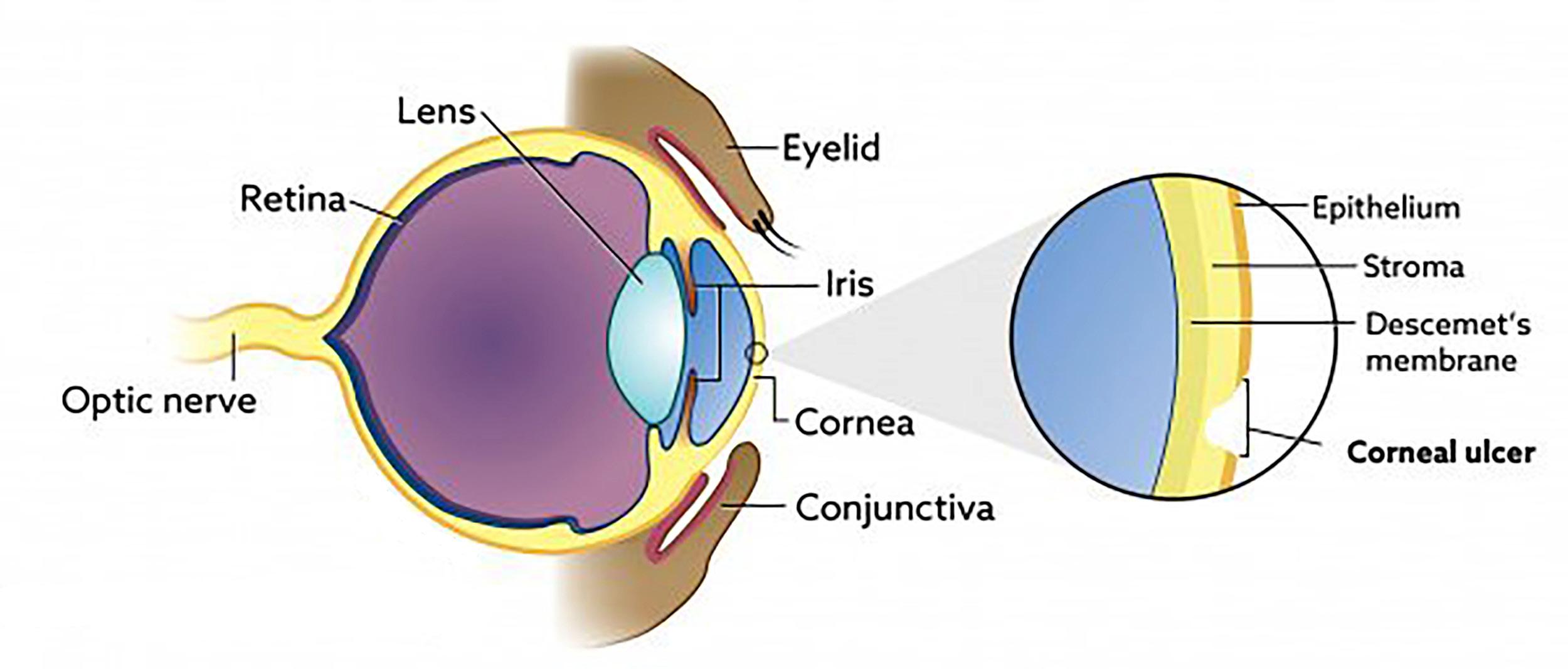
To diagnose an eye ulcer, vets will typically perform a thorough clinical examination, focusing primarily on the painful eye. A dye will often be placed in the eye to highlight the area of ulceration and allow your vet to establish its depth. Once there is a clear understanding of the nature of the ulcer, an appropriate treatment regime can be established. Typically, this includes ointments for use in the eye as well as oral pain relief.
Although eye ulcers can heal quickly, they can also deteriorate rapidly. If your horse is being treated for an eye ulcer, it’s crucial that you monitor their progress carefully and keep your vet informed if there is any deterioration, an increased degree of pain, increased corneal oedema, or increased discharge.
If your horse is experiencing pain in their eye, here are some useful tips to follow:
Call the vet – just like our own eyes, your horse’s eyes are precious, so waste no time in getting expert help.
Horses with injured eyes are often sensitive to light. If possible, move your horse into a stable or shaded paddock prior to the vet arriving.
Don’t put any ointment in the eye. There are many different ointments for eye issues in horses, and some can make ulcers worse rather than better.
Horses often rub at sore eyes – you
ABOVE: A basic cross section of the eye showing the location of a corneal ulcer. BELOW: A corneal ulcer, pus in the anterior (front) chamber of the eye known as a hypopyon, and ocular discharge (eye mucous) the colour and quantity of which can give your vet vital information and assist them in formulating an appropriate treatment plan.
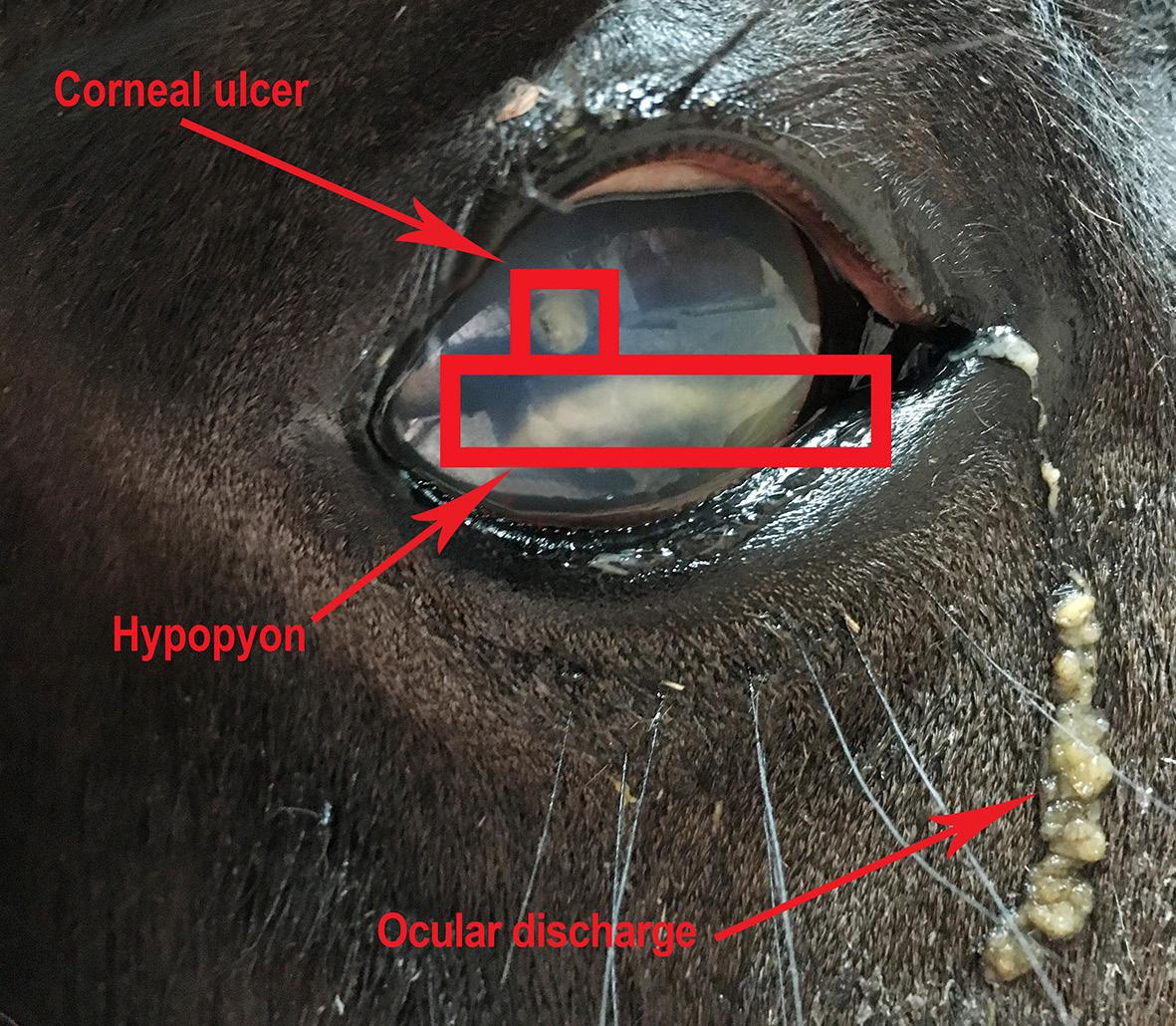
may need to supervise or distract your horse prior to the vet’s arrival to prevent them rubbing and further irritating the eye.
Do not clean away the ocular discharge. The colour and quantity of discharge from your horse’s eye can give your vet vital information and assist them to formulate an
appropriate treatment plan
Note any injuries visible to the eyelid or the eyeball itself.
For a deeper insight into the way a horse's eye problems are diagnosed and treated, you may find this case study of Raffy the Shetland Pony interesting. Raffy was five years old when his owner
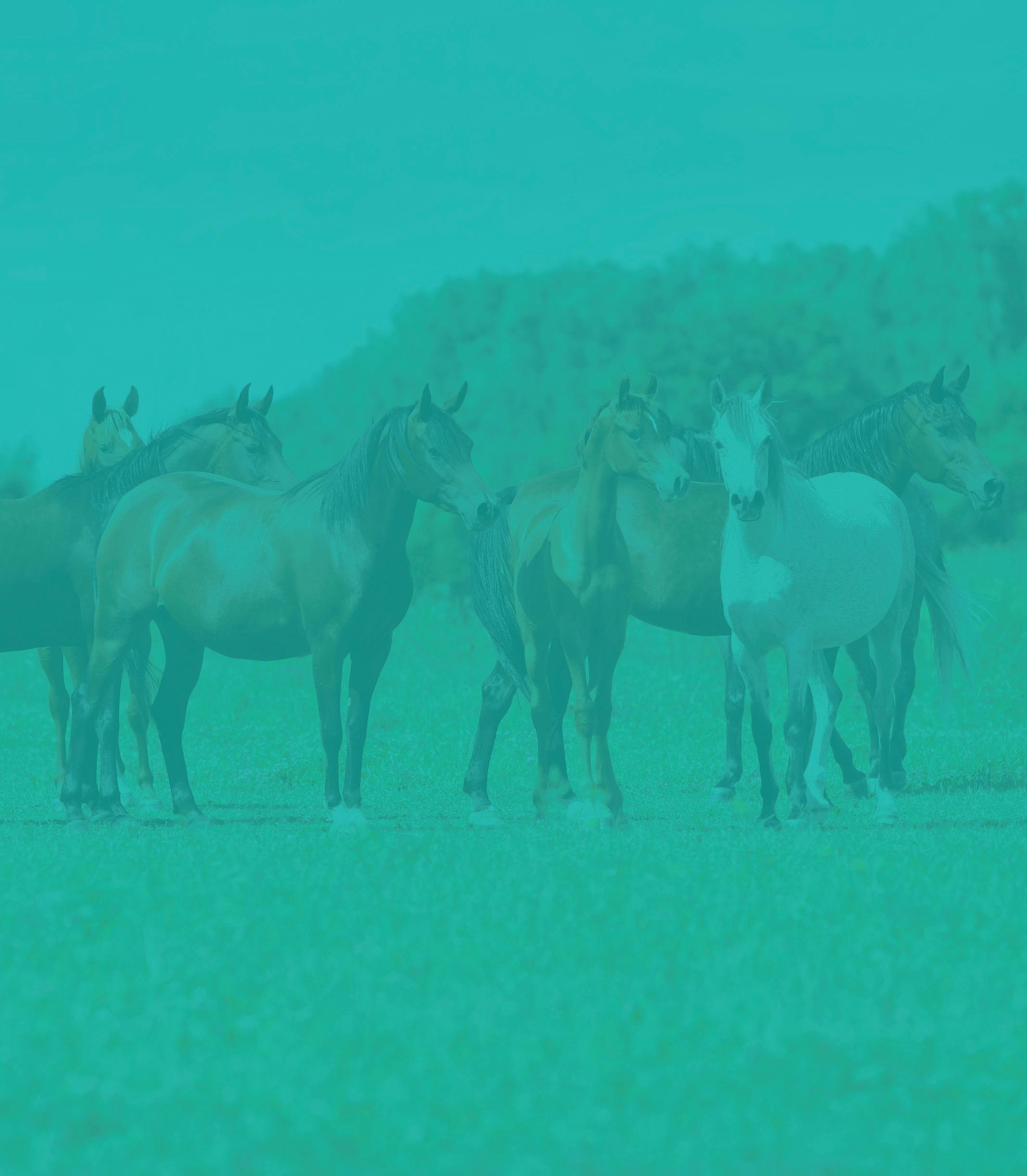
Apiam’s equine veterinary credentials are well-founded with a growing number of purpose-built dedicated Equine Vet Clinics and Referral Hospitals located in Victoria, New South Wales and Queensland, working alongside our network of mixed practice clinics in delivering quality equine veterinary care.

Scenic Rim Veterinary Service
Beaudesert QLD
Agnes Banks Equine Clinic
Agnes Banks NSW
Hunter Equine Centre
Scone NSW
Victorian Equine Group
Bendigo VIC
Gippsland Equine Hospital
Maffra VIC
Southwest Equine Veterinary Group
Warrnambool VIC
Find out more by visiting the Apiam Animal Health website & view the equine product range on Country Vet Animal Supplies




noticed he had a cloudy right eye which was light sensitive. She initiated treatment with an old eye ointment she had left over from a previously sore eye, but after five days and no improvement, she called me and asked for me to come and have a look.
On initial examination, Raffy was sedated and two nerve blocks were administered to desensitize his eye and remove his ability to squeeze his eye closed. When I noticed pus in the anterior (front) chamber of the eye, a condition known as hypopyon, it very quickly became apparent that Raffy wasn’t suffering from a simple corneal ulcer.
Hypopyon is a condition that occurs when bacteria enter through the damaged corneal surface and an influx of inflammatory cells become trapped within the eye’s anterior chamber.
My next step was to apply fluoresceine stain (a dye) to the surface of the eye, which confirmed my original diagnosis of a corneal ulcer. To understand how fluoresceine works, it’s useful to know that the cornea has multiple layers and some of these layers repel water (hydrophobic) and some of them bind to water (hydrophilic). The outermost layer of the cornea is hydrophobic – which is why your eyes are moist and teary. The second layer of the cornea, however, is hydrophilic. Fluoresceine is able to bind to the hydrophilic layer of the cornea, and applying this stain allows the vet to identify whether or not the cornea is damaged and if so, how extensively.
Finally, poor Raffy was also diagnosed with uveitis. Put simply, this is an inflammation of the uvea, the vascular and pigmented structures of the eye. The clinical signs of this are typical of a painful eye – cloudiness, sensitivity to light, ocular discharge, and a constricted pupil.
Treating Raffy required a multimodal approach. I prescribed two types of antibiotic ointments to go into his eye,
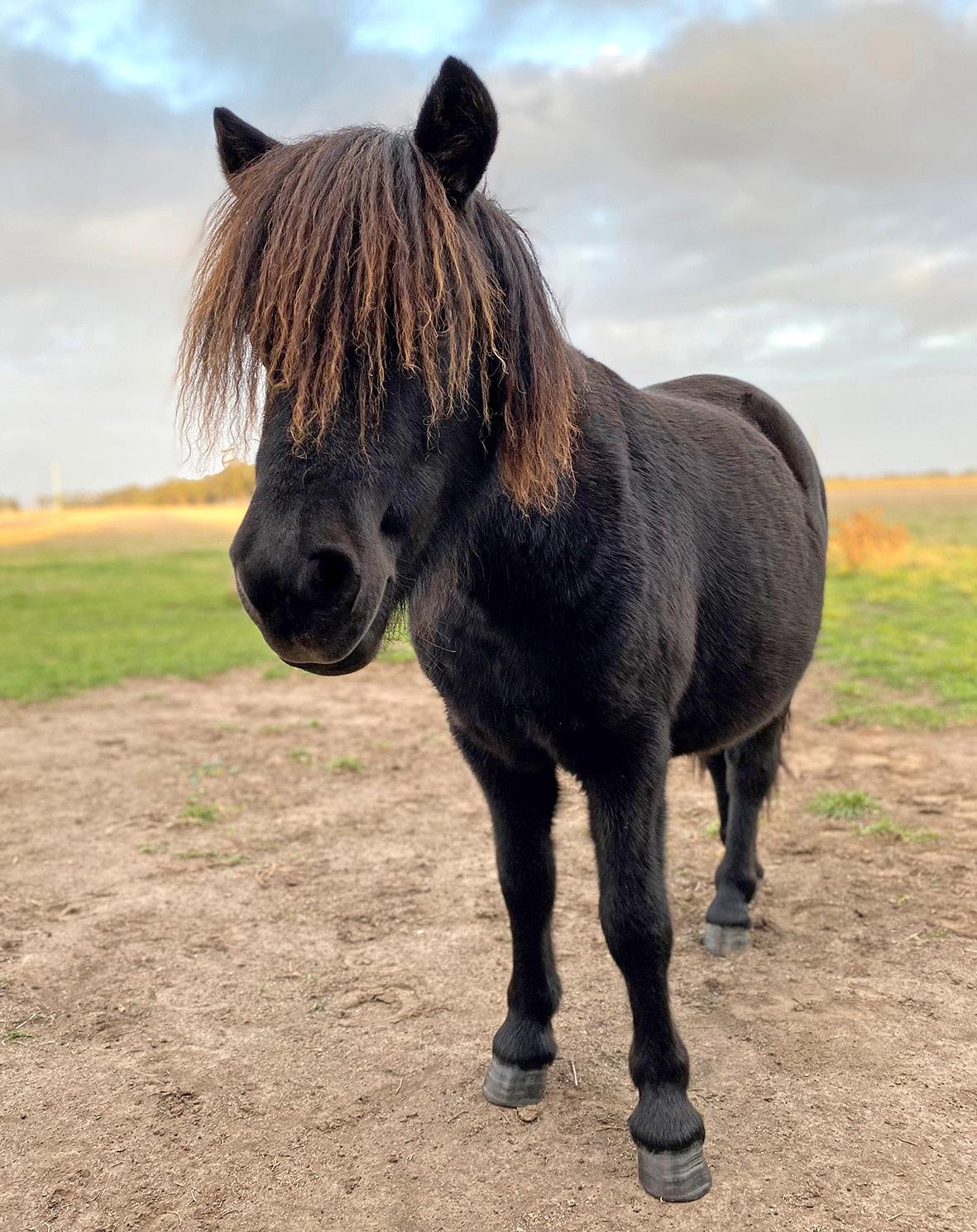
in addition to topical atropine to help resolve the uveitis, and I also started him on oral pain relief and doxycycline, an antibiotic that is released in tear film.
After a few weeks of four times daily treatment with eye drops, and twice daily oral medications, Raffy’s eye was fixed!
Luckily, Raffy tolerated all his treatments well. However, if he hadn’t, the next step to consider would have been putting in place a sub palpebral lavage (SPL). This is essentially a catheter for the eye that delivers liquid medication into the tear film through a long tube that runs from underneath the eyelid, up between the ears and down the mane. An SPL allows treatment to be administered into the treatment tube and removes the need
to fight to pry the eye open. It’s a great option for difficult to manage patients, but because complications can occur it requires stabling and very observant and proactive owners.
If you haven’t already guessed, there’s a moral to this story: don’t wait to get your horse’s eye examined by a vet if there is an injury or signs of pain. Early intervention is always best, and a speedy resolution is often achievable if the correct treatment is initiated early.

Dr Cat Marsden’s particular interests are in equine sports medicine, lameness and reproduction. She can be found at the Southwest Equine Veterinary Group in Warrnambool VIC.
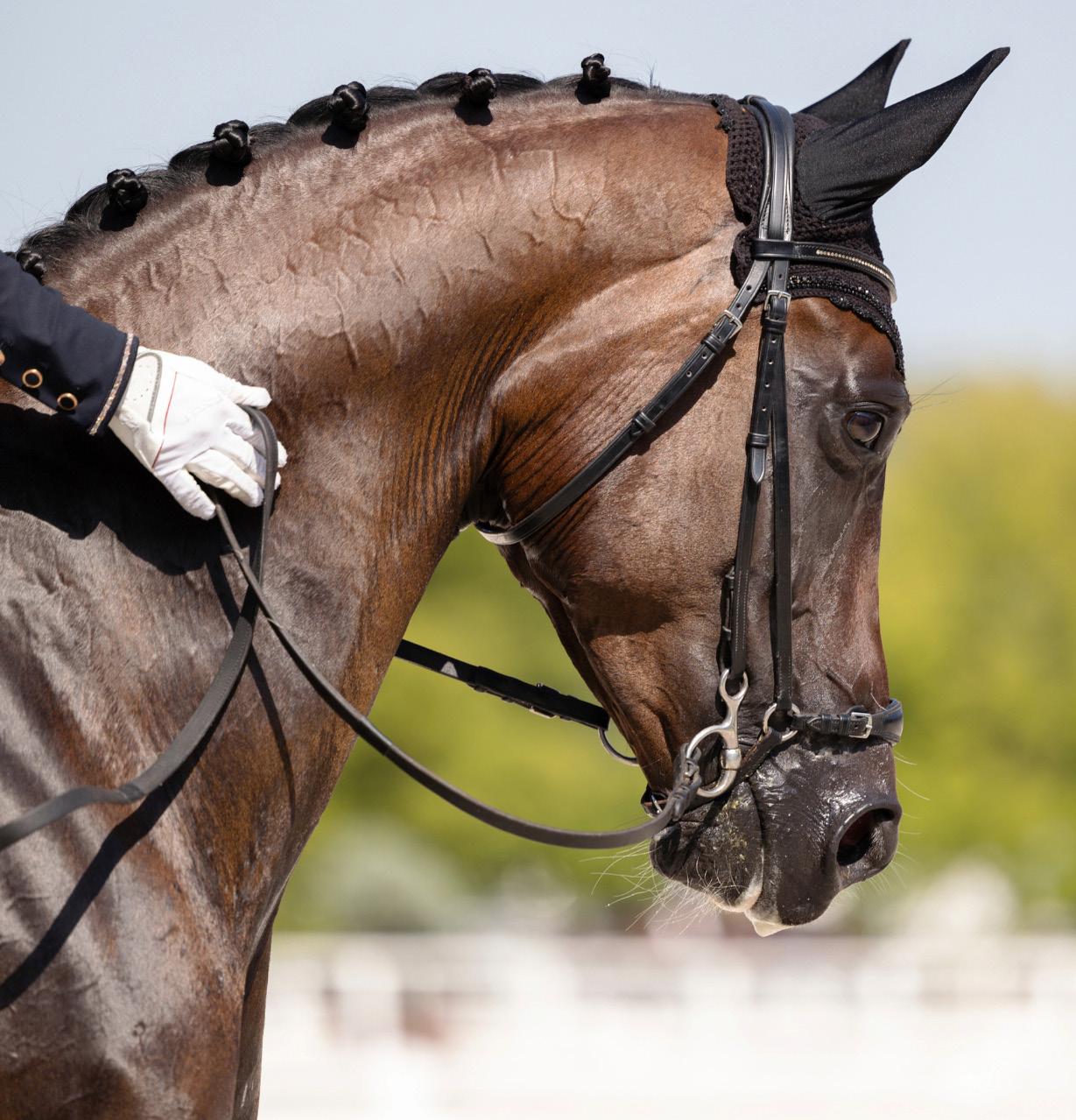

FEATURE
Protein - it's not the percentage
Ensuring your horse's feed includes all the essential amino acids is crucial for their wellbeing, writes DR JENNIFER STEWART.
Alternately feared and revered, protein features frequently in discussions on horse feeding, nutrition and performance. The word protein comes from ‘protos’, the Greek for ‘first’, because protein is the primary building block of all living cells. Second only to water in abundance in the body, protein makes up 75% of the dry weight of cells, and is involved in the synthesis
and production of hormones, enzymes, antibodies and many other functions essential to life.
The building blocks of proteins themselves are amino acids, which through chemical bonding combine to create intertwined protein chains. Each protein in the body has a specific combination of amino acids. In the same way that letters in the alphabet can be
combined to make different words, amino acids combine to make different proteins. Horses obtain amino acids from the protein in horse feeds. In the stomach, the bonds between chains are broken, and in the small intestine digestive enzymes cleave the chains into single amino acids. These are absorbed by the body, where they are reassembled into hundreds of horse-specific proteins.
Of the more than 500 amino acids that exist in nature, the most important are the 22 that are part of the genetic code of life and are used by all living things to make proteins. A horse can create some of the amino acids it needs by converting one amino acid into another - but essential amino acids can’t be made in the body and it is vital that they are provided in the diet. So when we feed protein in the diet, we are actually attempting to provide the horse’s essential amino acid requirements.
Proteins are much more than just muscle and body tissues. Organs, enzymes, the immune system, genes and many hormones are all dependent on correct protein and amino acids in the diet. To appreciate how much horses depend on receiving the correct amino acids, is to be aware of how dynamic the equine system is. Every second the bone marrow makes millions of red blood cells; every four days the blood platelets and most of the lining of the gastrointestinal tract are replaced; every 10 days, most of the white blood cells are replaced; and the number of muscle cells repaired or created in horses that are training is huge. In addition, necessary for muscle growth and repair, strong tendons, optimal energy metabolism, increasing bone density, joint health, hoof wall thickness and greater overall soundness, is the interaction of vitamins and minerals with the amino acids provided by dietary protein.
Feed labels
Feed labels will state the percentage protein (CP%) of the feedstuff and featured frequently in nutrition

discussions, resources and articles is advice on the recommended percentage for horses of different ages. However, horses need a number of grams of protein each day – not a percent! The amount of protein a horse is getting can only be calculated if the weight of feed is known. If, for example, a feed is 20% protein and a horse is fed 1kg, the horse is receiving 200 grams of protein. Another feed may be 10% protein and if a horse is fed 2kg it also is getting 200 grams of protein.
So which feed to choose, which is better value, better for the horse and better quality? The percentage of protein is no indicator of the quality of the protein or feedstuff - this can only be determined if the amino acid profile is known.
Every protein and each tissue in the body has its own specific recipe of amino acids. If an essential amino acid is not available in the correct quantity, the amount of protein the body can build is limited. Amino acids that can’t be used to make a specific tissue (muscle, hoof cells, bone etc) because the supply of one has run out, are converted to fat. In this way a deficiency of any one essential amino acid increases fat accumulation and decreases muscle, bone, tissue building and so on.
On the daily menu
Essential amino acids must be eaten every day. If not, the horse will borrow them from other parts of their system to make them available for daily maintenance. The exclusion of even one essential amino acid from the diet or the reduction of an essential amino acid in relation to requirements, will reduce muscle and cell building by up to 50%.
Every protein source has a different combination of amino acids. Some combinations are very good and some not so good. For this reason, the percentage of protein in horse feed is a useless value, unless you know the amino acid profile. For example, the feed tag might say 14% crude protein, but if all the amino acids are not supplied there may be only 8 or 9% usable protein. So
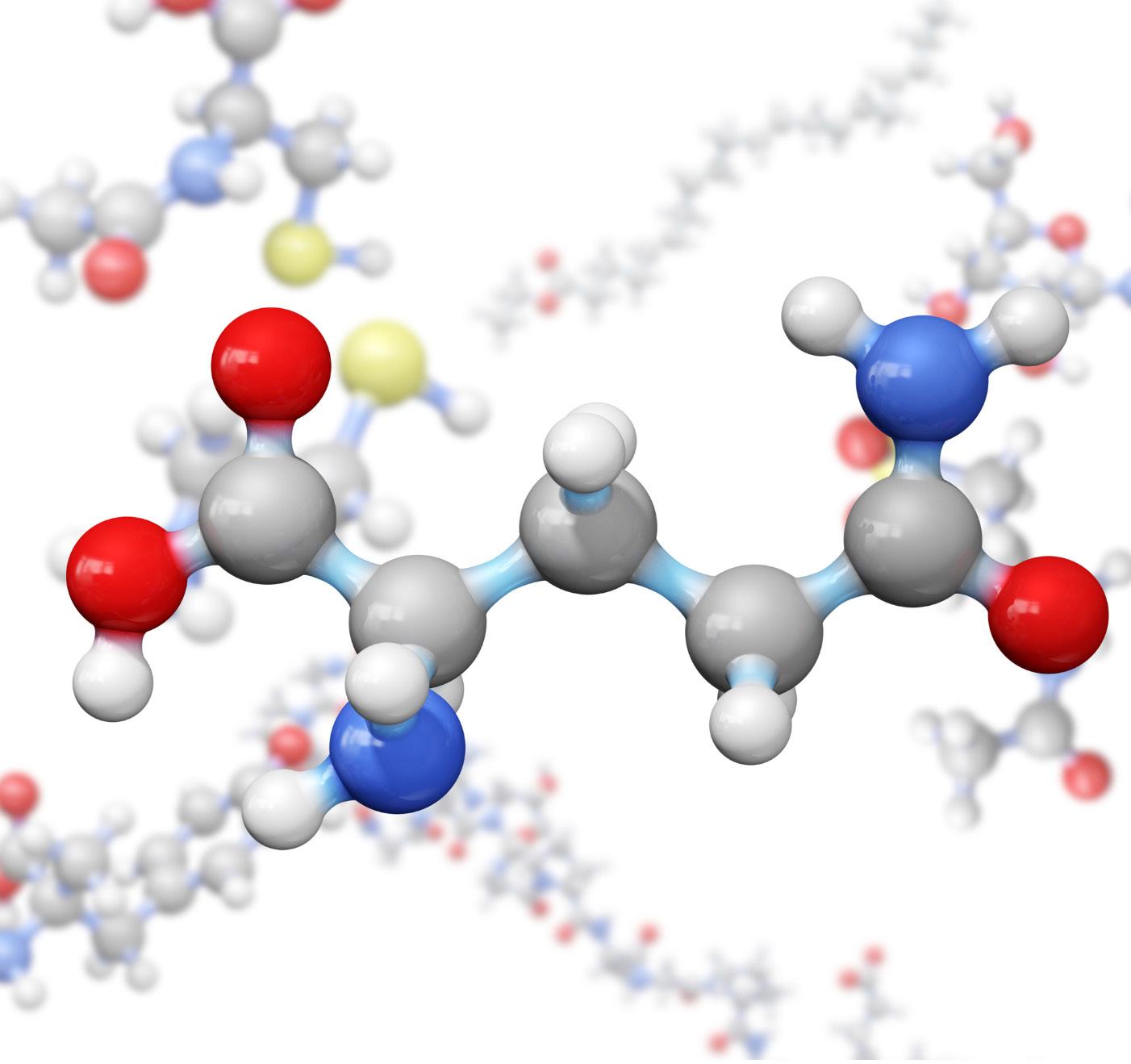
ABOVE: The bonds between protein chains are broken in the horse's stomach. LEFT: It's during recovery from work that protein works hardest.
percent is not an indicator of quantity or quality – but what else affects our horses ability to obtain amino acids from their feed?
What hinders protein availability?
Feed processing, soaking, anti-nutritional factors, time of feeding and dental health are all involved in amino acid (protein) availability, digestibility and absorption. For centuries, feedstuffs have been processed by boiling, cracking, crushing, grinding, rolling and more recently by extrusion, micronizing, steaming and steam-flaking – all aimed at increasing feed digestibility. However, all amino acids have a different melting point and many methods of grain processing result in damage to the essential amino acidslosses of up to 50% have been measured during dry-extrusion.
While steaming and soaking aim to reduce sugar, starch or dust levels, they affect amino acid levels in hay. The high temperatures generated during steaming lead to protein damage and consequently to a reduction in the digestibility of
protein and amino acids. Nevertheless, steaming successfully reduces viable microorganisms and binds dust particles, and soaking reduces the sugar and starch levels – making them proper and sometimes the only safe way to feed hay. Both need to be balanced accordingly with a complementary essential amino acid and mineral supplement.
Anti-nutritional factors: Some animal feeds, such as pulses, must be cooked to enable the protein to be digested. Common pulses include chickpeas, mung beans, lentils and fava (broad or faba) beans. All contain significant levels of anti-nutritional factors, the compounds that protect plants against pests and viruses, but irritate and impair the function of the intestine, cause excess mucus production, interfere with the absorption of nutrients and hamper bioavailability in humans and horses. Processing can reduce anti-nutritional factors and cooked pulses (never raw) are used as food in farm and feedlot operations. Although high in protein,


they are untried, untested and not recommended for horses - and research in other species cannot be extrapolated to horses (the Agrifutures feeding guide is a useful resource).
Other novel feedstuffs include hemp flour, also not tried and tested for horses. While descriptions often look good on paper, it is worthwhile contacting manufacturers for specific information on research results in horses.
Timing of feeding protein: Exercise results in a degree of muscle damage and a decrease in protein synthesis that continues for several hours after exercise has ceased. No matter how balanced the daily diet, exercise causes a disruption to muscle metabolism and it is during recovery that the protein will be working hardest, repairing tiny muscle rips and tears that occur during work.
Muscle must be repaired rapidly to alleviate muscular stiffness, delayed muscle soreness, support rapid recovery, allow training to continue, and to prepare for the next training session or competition. The working muscles use fuel at a very high rate and the mobilisation of stored fuels is a catabolic process – that is, it involves the breakdown of body stores. We can help switch the catabolic (breaking down of muscle tissue) state into an anabolic (rebuilding of muscle tissue) state after work, by supplying essential amino acids and anti-oxidants in the immediate postwork period. Restoring protein balance post-exercise encourages the building of lean muscle mass - in fact, preparation for the next exercise bout begins as soon as the last one is finished!
Diets must contain the correct amount of high quality, well-digested protein along with minerals, vitamins, fat and carbohydrates. The interaction of these amino acids with vitamins and minerals is necessary for muscle growth and repair, stronger supportive tissues, improved carbohydrate metabolism, stronger bones and joints, thicker hoof walls and greater overall soundness.
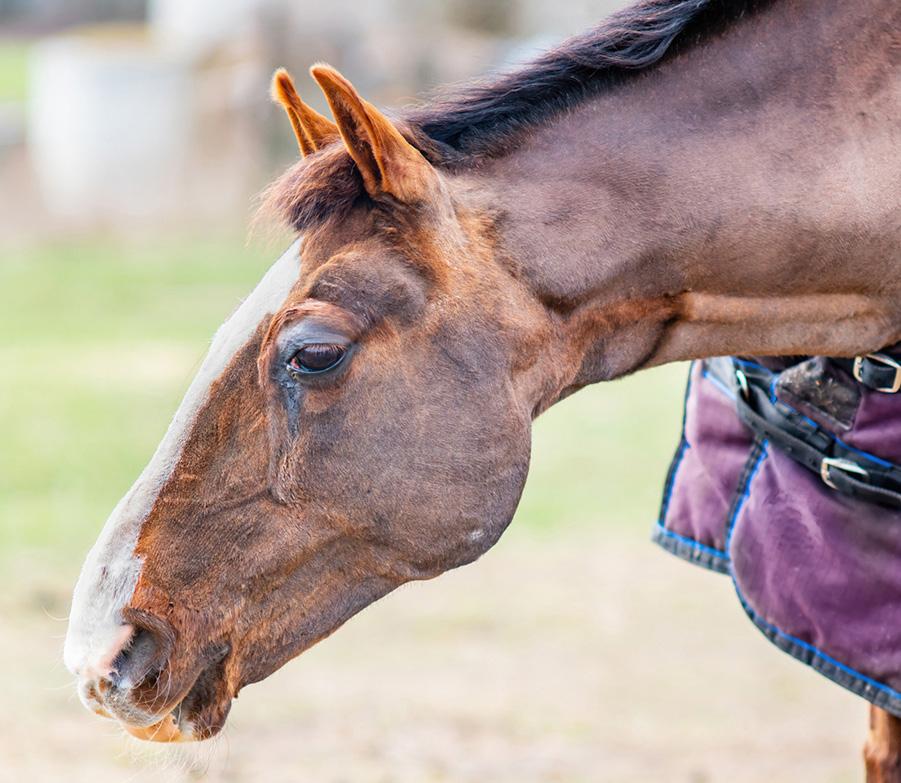
ABOVE: Feeding extra soymeal or whey protein can be beneficial for older horses.
Older horses, worming and dentistry: Studies from mid last century found older horses had a reduced ability to absorb protein, with scarring of the large intestine caused by worms and dental issues contributing to malabsorption and/or maldigestion. Damage from parasite scarring caused the same reduction in digestive efficiency as left colon resection surgery! However, with modern wormers and dental care the deficits in digestion identified in previous studies are no longer found. Under most practical feeding situations, differences in digestive capacity primarily due to age are unlikely to be present and most horses do not require special geriatric or ‘senior’ horse feeds.
The main cause of poor protein digestion and utilisation in older horses today is inadequate chewing. Even horses that do not have glaring dental problems may have difficulty holding their muscle mass and weight in general on baled hays. The most significant influence on the ability of digestive enzymes to breakdown protein in the feed is the degree of exposure and thorough chewing of roughage. For older horses that do well on pasture (which is easier to chew) but
have trouble maintaining weight on hay, switching to dampened hay pellets or cubes and providing a complementary feed balancer is often all that is required. When this is not sufficient, feeding extra soymeal or whey protein can be very beneficial.
The word protein is also thought to come from the Greek ‘proteus’, meaning versatile, mutable or capable of assuming many forms. Feed protein also changes form to become a body substance after being eaten. Our role is to ensure we provide the right amount of raw materials by considering the quality, quantity and availability of protein in the diet.

Dr Jennifer Stewart BVSc BSc PhD is an equine veterinarian, a member of the Australian Veterinary Association and Equine Veterinarians Australia, CEO of Jenquine and a consultant nutritionist in Equine Clinical Nutrition.
All content provided in this article is for general use and information only and does not constitute advice or a veterinary opinion. It is not intended as specific medical advice or opinion and should not be relied on in place of consultation with your equine veterinarian.


What better way to kick off the eventing season than with the annual Wallaby Hill Extravaganza, which was once again a huge success, writes AMANDA MAC.
There's nothing quite like the annual Eventers vs Showjumpers fancy dress competition to get the eventing calendar off to a great start! It's become an eagerly anticipated - and hotly contested - feature of the Bowral Kubota Wallaby Hill Extravaganza, which this year had an added focus.
Although he didn't attend last month's event, Shane Rose's legendary mankini, which in 2024 created quite the fancy dress stir, was the inspiration behind a very successful fundraising drive in
support of Movember.com and men's health.
With Shane's blessing, Wallaby Hill's Alex Townsend commissioned a mankini themed 2025 calendar, tea towel set, and kitchen apron, which were sold through Wallaby Hill's online shop with a percentage of the proceeds going to Movember.com. Jewel in the fundraising crown was a raffle for a one of a kind Mankini show jump valued at $1,700. The raffle, drawn at this year's Extravaganza by Kubota's Chris
Pennells, was won by Simon Cathcart, a keen Movember supporter who purchased several hundred dollars in tickets. While it's obviously too late to buy raffle tickets, there are still some Shane Rose mankini inspired items available in Wallaby Hill's shop, but better be quick!
Sixteen-year-old show jumper Zara Young and Aveden Indigo took on a competitive Eventers vs Showjumpers field to win, beating Olympian Chris Burton to 2nd place and Merran Wallis to 3rd in an exciting contest of skill.
And top marks to the winners for their creativity! Zara delighted as Little Bo Peep aboard her equine sheep; Chris and Cassina SR ticked all the right boxes with a mankini and accessories embossed with the Movember moustache logo; while Merran Wallis and Arthella Superwoman, who jumped to the tune of ‘Run Rabbit Run’ were on point in their eye-catching bunny attire.
Now in its 8th year, the Bowral Kubota Wallaby Park Extravaganza is a firm favourite with both riders and spectators. Last month's event attracted over 180 competitors, and in the region of 800
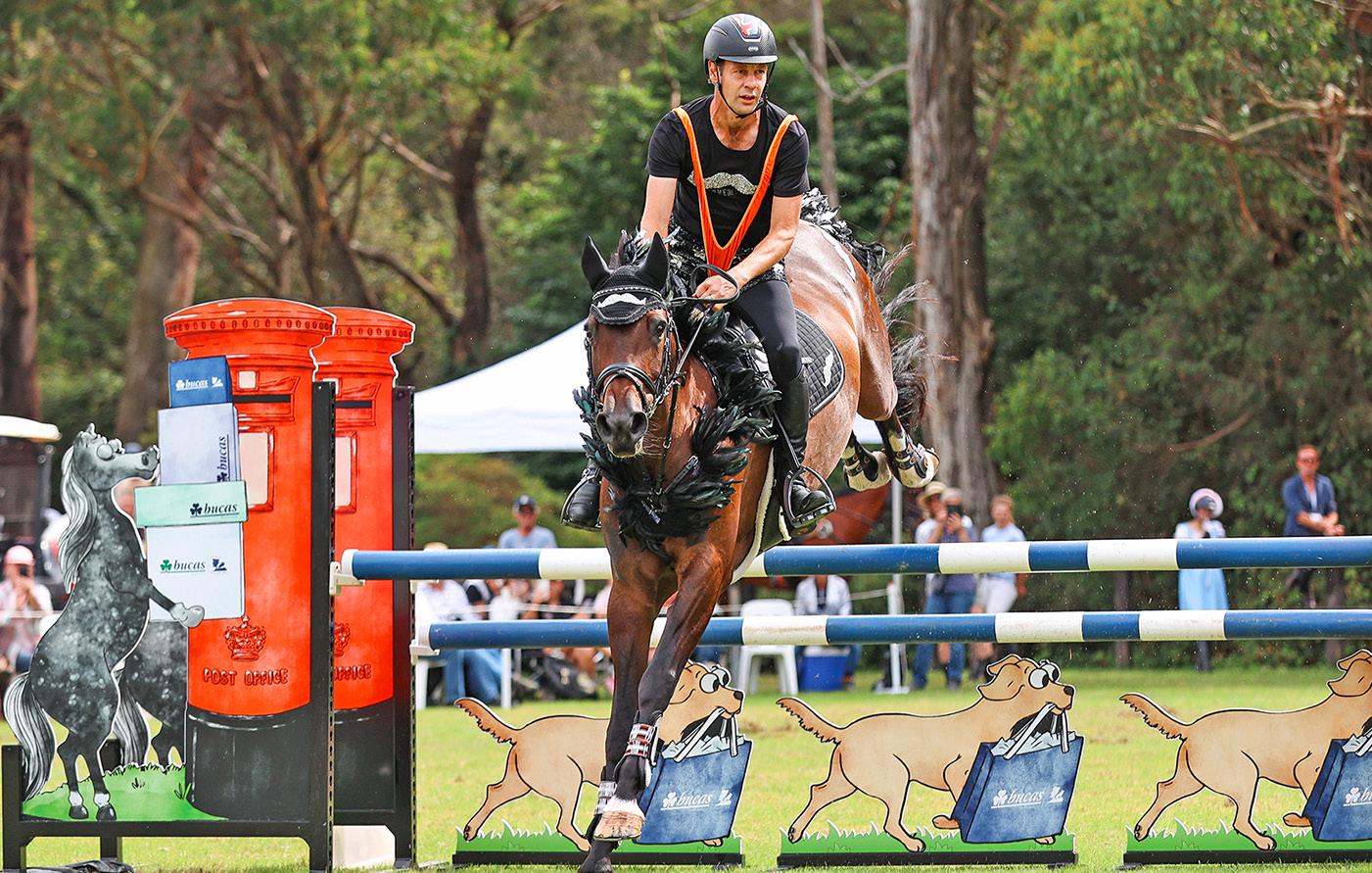
visitors. There were eight show jumping classes, including a Best Dressed in the Eventers vs Showjumpers and a Best Dressed for Ring 2 competitors. All in all, plenty of costumes were on show, with more than a sprinkling of mankinis - a tribute to Shane, but none worn with his signature style and confidence!
Alex Townsend, Wallaby Hill's owner and manager, says that as the Extravaganza has grown it has become more and more time and labour intensive to run, but the fancy dress component alone makes it all worthwhile. "I love how everybody gets into the spirit of dressing up. From kids to adults, they all get out there and engage in having fun with their horsesand it's really lovely to watch."
And the Movember campaign, which raised just under $8,000, was a huge success. "Mankinigate was a bit of a negative last year, unnecessarily so, and I'm thrilled we've managed to turn it around and make it into something so worthwhile, to actually do something good with it - that's the best outcome you can hope for," she adds. And you can't argue with that.

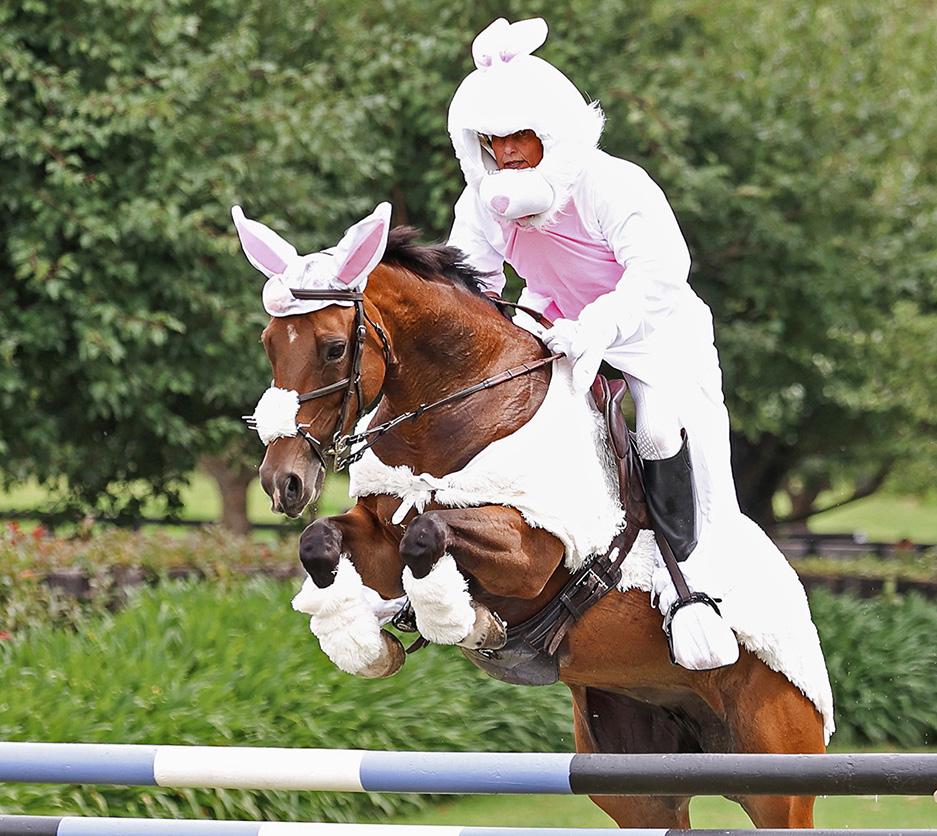
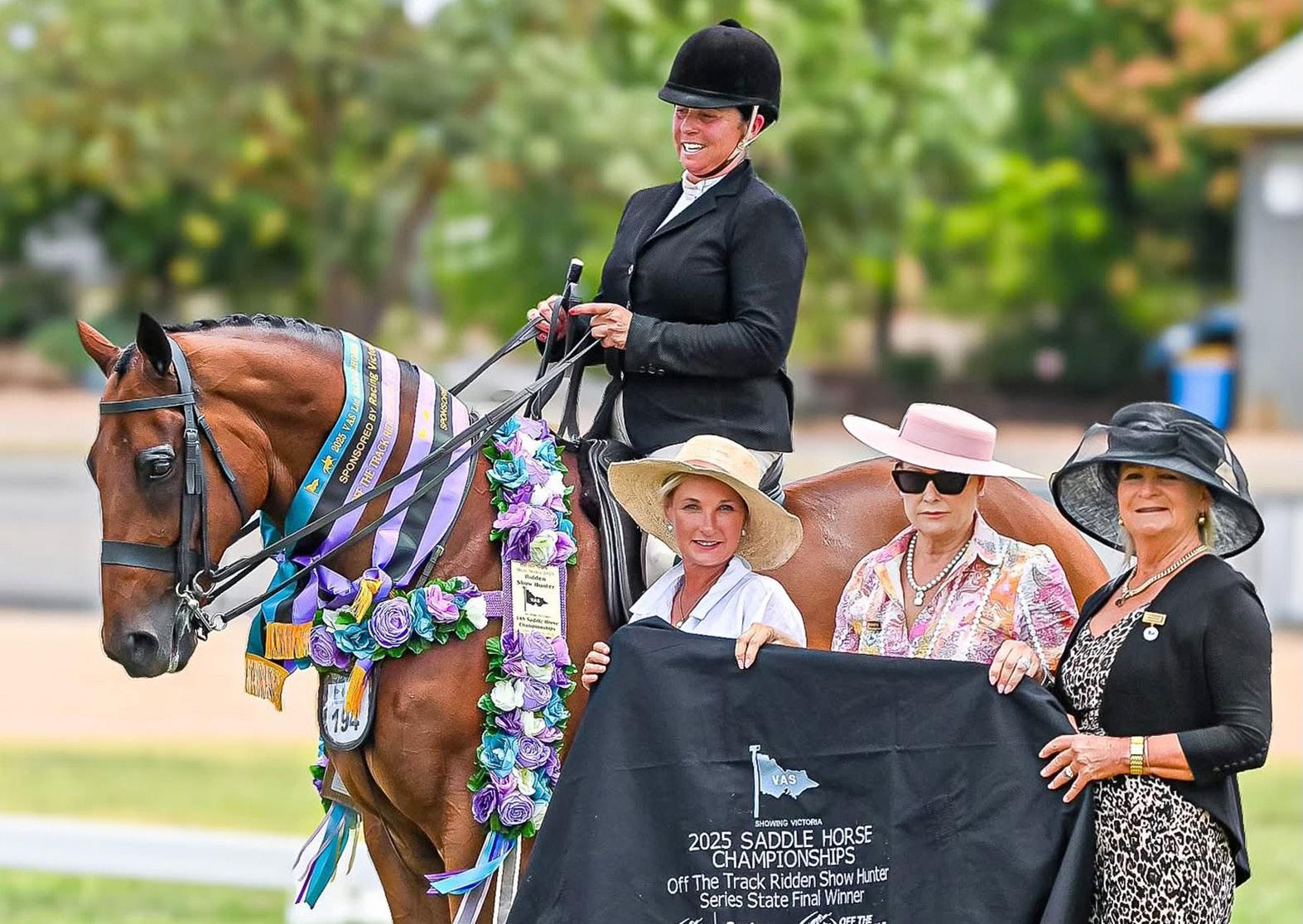

In Fiona McIntyre's opinion, nothing compares to the elegance of an off the track Thoroughbred strutting across the show ring, writes AMANDA MAC
Fiona McIntyre has been a tireless advocate for off the track Thoroughbreds for over 30 years. She’s retrained numerous retired racehorses, and her enthusiasm for them is obvious. “I’ve always enjoyed taking on that diamond in the rough,” she says. “Transforming them and then finding them suitable homes is really satisfying.”
In 2020 her efforts were recognised when she was presented with the Victorian Lady of Racing Award, but there’s been much water under the bridge since then, and Fiona is not one to sit idly and watch it flow by! Currently, she’s working with Racing Victoria as the Operations Manager for their Equine Welfare division – and she’s loving it:
“It's fantastic, because it’s something I’ve always felt so passionate about, and to be given the opportunity to get behind the scenes, so to speak, is brilliant.”
Fiona’s role includes looking after Racing Victoria’s off the track programs as well as their retrainers, which given her own experience as a Racing Victoria Acknowledged Retrainer, makes her more than well equipped for the role.
“As someone who's been on the frontline, it's wonderful to have the opportunity to give back and support our retrainers,” she tells me.
You would think that that, along with her role as Chair of Equestrian Victoria's Show Horse Committee, would keep her busy enough – but no! Based at Murgheboluc, some 20 kilometres north-west of Geelong, Fiona owns and operates McIntyre & Lumsden Equestrian along with life and business partner Jonathan Lumsden. The facility has become renowned for

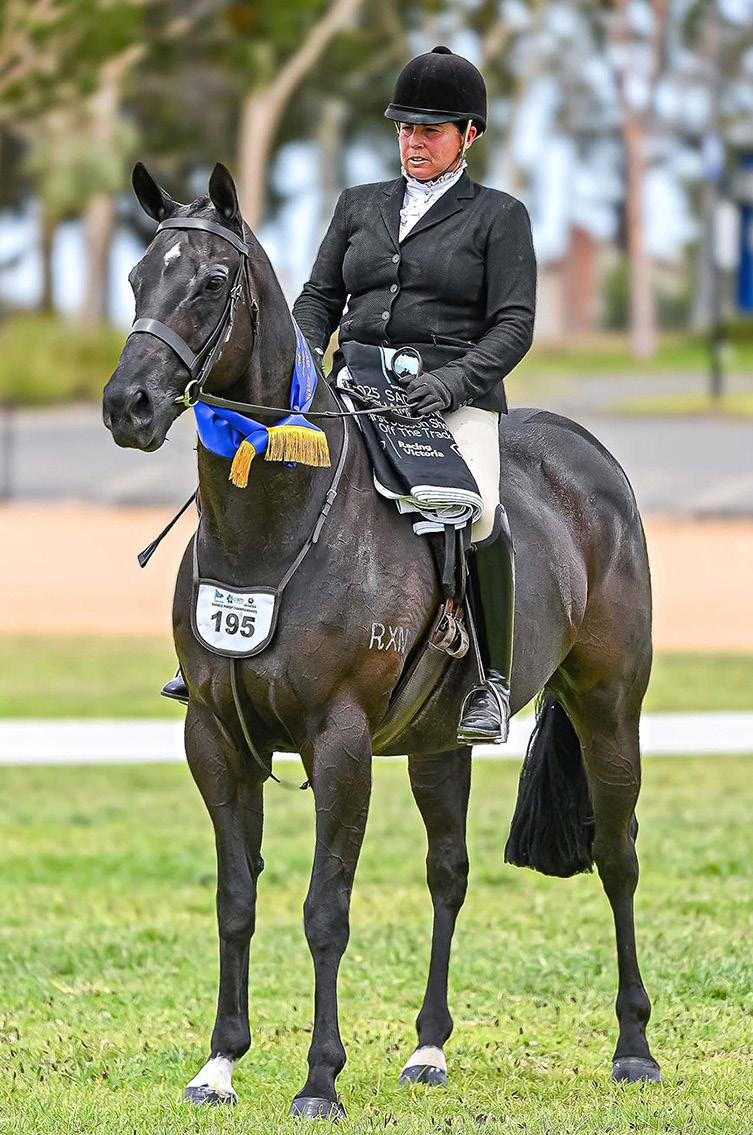
retraining Thoroughbreds who go on to enjoy careers as pleasure, riding and companion horses, not forgetting those who shine in the show ring.
With three off the tracks currently in their retraining program, Fiona, a keen competitor for most of her life – she made her show ring debut as a fiveyear-old – also has a team of four OTTs who are doing exceptionally well in the show ring.
First for honourable mention is Westminster. Raced as The Arod, Roddie had a mediocre career on the flat before retiring. After trying his hand as a steeple chaser/hurdler, he arrived at Fiona and Jonathon’s as a sight unseen nine-year-old destined to be Jonathon's new field hunter. “We put him out into the paddock to let down, but when we started working him, he blossomed. So we took him to a local show, his first, and he won Supreme Champion Led –
so after that I kind of stole him,” Fiona laughs.
Now the show ring seasoned 13-yearold has found his true vocation. “He recently won the Victorian Saddle Horse Championships Off the Track Show Hunter State Final Series. For three years in a row, he’s won Champion Off the Track Show Hunter at Barastoc Horse of the Year, and last September he won the Champion Ridden Off the Track Show Hunter at the Adelaide Royal. He’s doing really well, and as a heavier boned horse, he’s a perfect show hunter,” Fiona explains.
Nasukawa, on the other hand, has just completed his newcomer season. Known as Nas around the yard, he retired after a short racing career of six starts for two wins and two placings.. “He too has had tremendous success in the OTT classes,” Fiona says. “He won the Newcomer and the Rising Star Off
the Track at the Victorian Agricultural Society Saddle Horse Championships in January, as well as Newcomer Off the Track at Barastoc a few weeks ago.”
The rising nine-year-old has benefitted from the hard work Fiona put in at home to ensure he had a really good foundation, and, she tells me, Nasukawa is a delightful young horse to take out. And then there’s Highgrove, a Chris Waller horse who raced as Able Fun. “I’ve had Able for several years. He retired from racing at quite a young age and his owners, who live in Hong Kong, wanted to see him do something other than just sit in a paddock.” Long story short, Chris asked Fiona if she’d be interested in taking him on and doing something with him. “And we now have a lovely relationship with his owners,” Fiona says. “I send them regular updates and they love following his showing journey.”
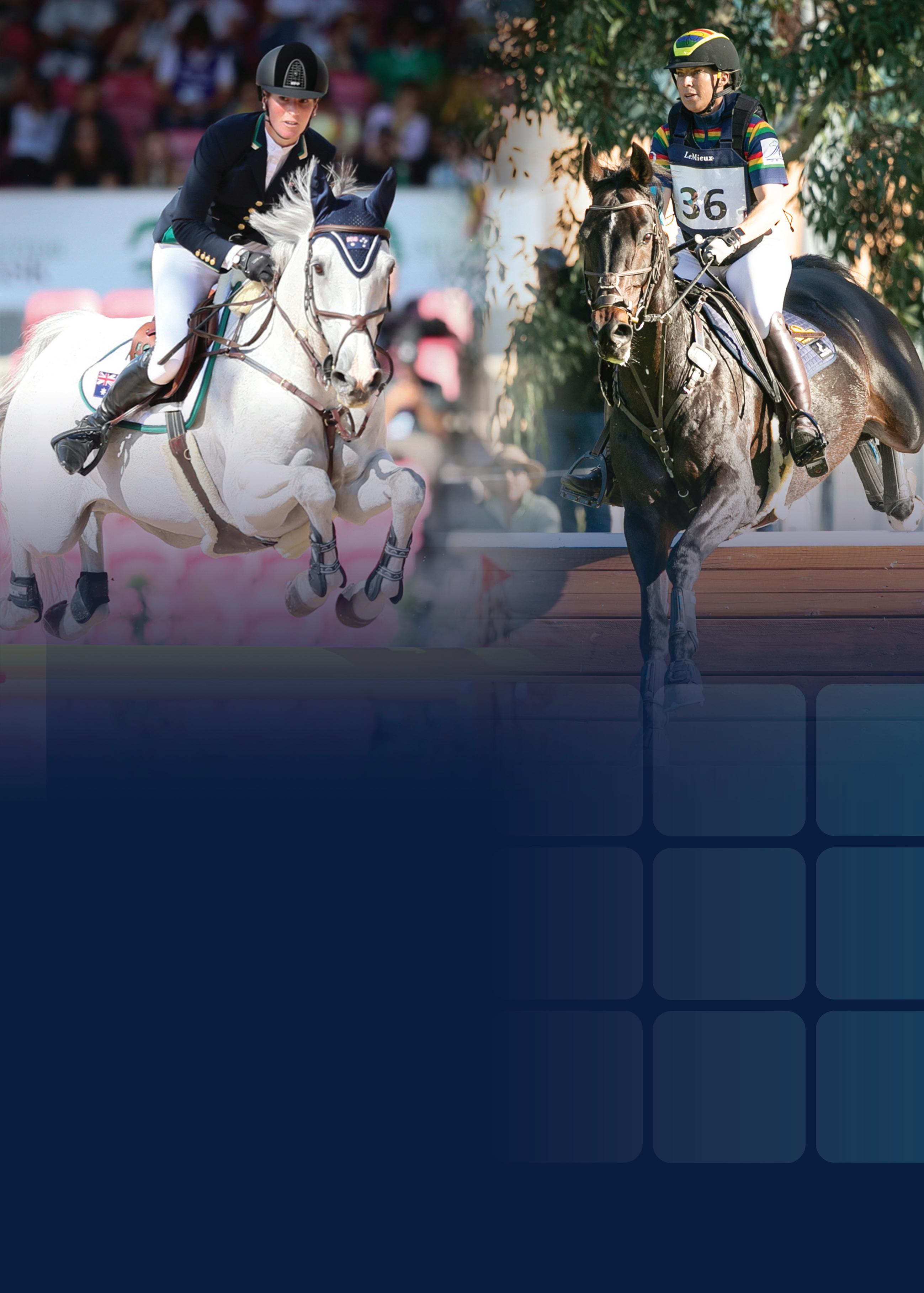
For over 30 years Kentucky Equine Research has continually developed innovative solutions to the health and nutritional challenges inherent in modern equine management. The results of studies conducted at its research farms, as well as advances in equine nutrition from institutions around the world, are applied and thoroughly tested in the creation of KER products.
Proprietary ingredients and science-based solutions characterise KER Targeted Nutrition. Top equestrians worldwide in a variety of disciplines know they can rely on KER to fuel world-class performance.
Discover science-based products or your closest retailer at ker.com


Fourth on Fiona’s team is Jokerman. After retiring from the track, he was owned by a friend of Fiona’s, who after several years asked her to rehome him. But it never got that far! “I decided to keep him and I’ve been showing him myself. He's an older horse who had a late start in the show ring, but I think sometimes that added maturity gives them a disposition that makes it easy for them to fit into their post racing careers.”
I tease Fiona, suggesting that giving her horses to rehome is quite dangerous. “It's ridiculous,” she chuckles. “Although to be fair, I guess it's really become quite difficult to rehome them because no one's got the money to take them on. So I figure they're better off happy, safe and healthy with me, and that they may as well stay and enjoy a life of luxury.”
Needless to say, Fiona believes off the track Thoroughbreds are brilliant show horses. “They're actually the epitome of the show horse: they're beautiful, they're graceful, and you just can’t beat the elegance of a Thoroughbred strutting across the show arena. To me, they’re the supermodels of the show ring.”
Add the Thoroughbred’s remarkable versatility and intelligence into the equation, and there’re few breeds that compete. “When they retire from the track, they transition into these beautiful, graceful horses. It's really such a rewarding journey to take with a horse. Of course, the accolades are a bonus, but I just find seeing them transition to be so incredibly rewarding.”
Fiona has developed a strategy that she applies to every new off the track that arrives in her yard. If they’ve only just retired, she might ride them for a day or two to get a feel for where they’re at, before putting them out for a good long spell and let down, which might be from six to twelve months depending on the horse. During that time, she often brings them up to the barn, teaches them how to tie straight as opposed to being cross tied, and generally gives them a bit of

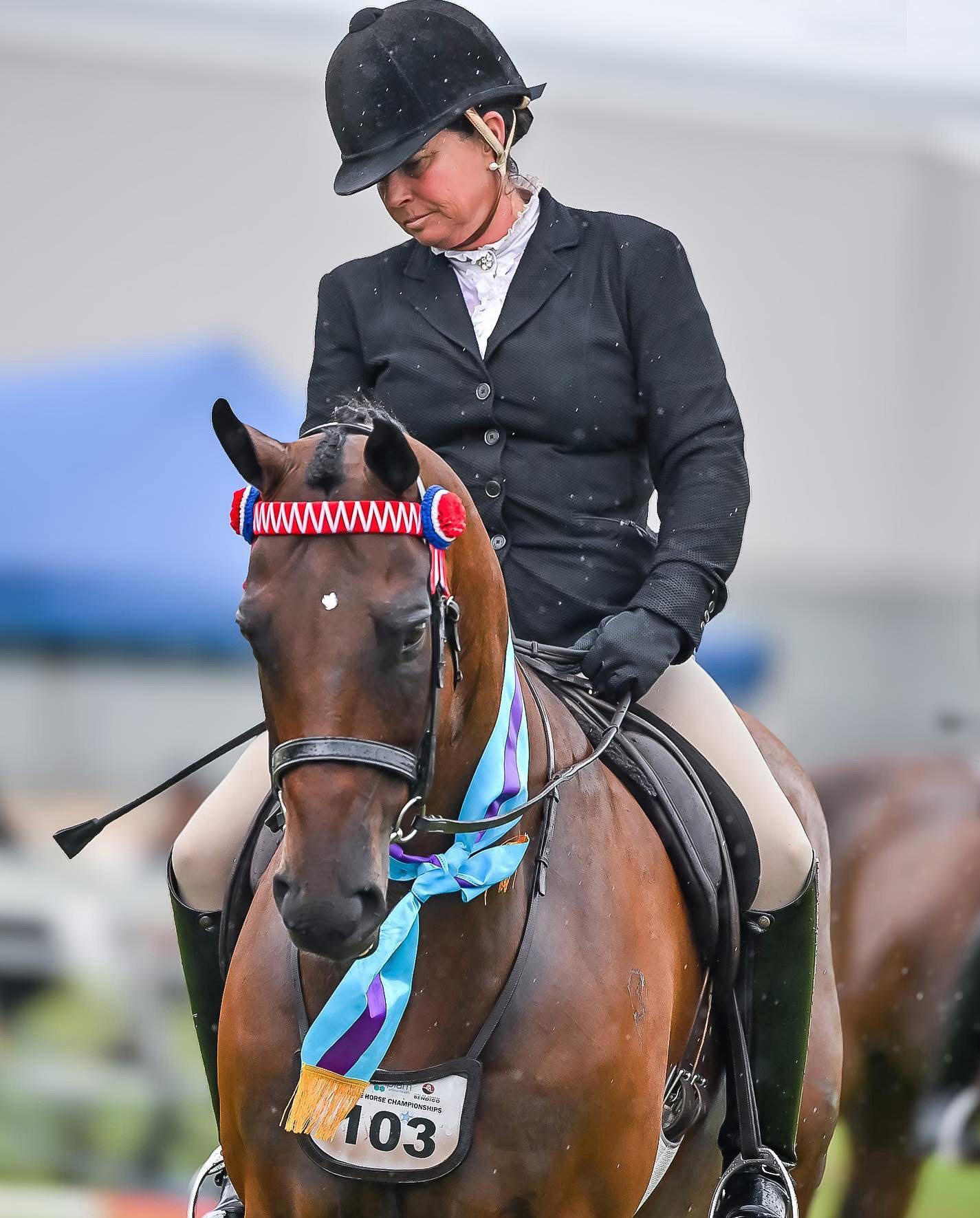
handling. “I like to get to know each horse’s individual personality. And then when I do start them, I literally start them from scratch, almost as if I'm working with a breaker. I'll do a fair bit of ground work in a round yard, lunging and long reigning them so they learn how to carry themselves,” Fiona explains.
Over the years, Fiona has noticed a marked difference now that many horses are given foundational training before they begin their track career. “Those horses in particular will take to being trained really quickly. You can pick it when you first sit on them, whether they know what taking some contact is, for example. In the past, Thoroughbreds have had a bit of a rough reputation as
the crazies of the horse world. But with pretraining, their transition into their second career is much easier.”
Fiona, like so many OTT owners, is grateful for the dedicated off the track classes that are now being offered. “Show hunter classes tend to be dominated by Warmbloods. So off the track classes really come into their own as a way of providing opportunities for horses after they’ve retired from racing. And if we want to encourage the rehoming of these horses, we need more classes like them,” she adds.
And I’d say that that's a very fair point. Follow Fiona at McIntyre & Lumsden Equestrian



There are some key considerations for feeding your horse during the change of seasons. Equine nutritionist
LARISSA BILSTON explains.
From the warmth of spring and summer to the crispness of autumn and the chill of winter, horse owners must adapt their feeding strategies to ensure optimal health and performance. Changes in temperature, pasture quality, and metabolic considerations require thoughtful nutritional adjustments.
Climatic regions should also be considered, as the transition from the wet to dry season in the tropics requires different management strategies compared to the changes across all four seasons in temperate regions. Here’s what every horse owner should consider when managing feeding programs during these transitional periods.
The forage available to horses varies throughout the year because pasture growth and maturity changes in response to environmental conditions. Spring and autumn are particularly challenging seasons because they bring fluctuations in temperature and grass growth, and can impact metabolic sensitivities when plants are high in carbohydrates. To navigate these changes successfully, horse owners must assess forage availability, balance nutrient and sugar intake, and monitor their horses for signs of dietary imbalances.
Adjusting forage availability: During a hot, dry summer when grasses mature and dry off, most horses will have been transitioned onto a quality grass or meadow hay to supplement forage levels. As the weather begins to cool and autumn rains bring fresh

grass shoots, continue to feed hay at an appropriately reduced rate as the gut adapts to the change in forage quality. This helps to maintain gut health and minimise scouring. Grass growth will slow and become less nutritious from mid-autumn and over winter, so horses will once again benefit from increased hay supplementation to ensure adequate forage intake.
Maintaining healthy body condition: As grass growth increases in early autumn, control the size of hard feeds to maintain a healthy body condition. Some horses may require only a slight reduction in hard feed, while easy keepers will need only a small quantity to carry supplements with the essential vitamins, minerals needed for optimal health.
As temperatures cool, horses require more calories to maintain body heat. For horses in light work, forage may provide enough calories, but many Thoroughbred types and hard-working or older horses may need additional energy sources with more hay and a larger hard feed over winter. It is better to make frequent small changes to the size of meals than to wait until drastic weight gain is required.
Considerations for metabolic conditions:
Horses with metabolic conditions such as equine metabolic syndrome (EMS) or insulin resistance (IR), including some with Cushing’s disease, are prone to laminitis during seasonal transitions. Grass sugar levels are naturally more concentrated in young shoots and after frost, increasing the risk of laminitis.
Metabolic horses require careful management to avoid the high carbohydrate grasses that increase a blood insulin response and trigger laminitis. Recommended management strategies include reducing total intake with the use of grazing muzzles, strip grazing and removal from grass onto track systems or loafing pads. These strategies aim to replace high sugar, high starch grass with low carbohydrate teff or rhodes grass hay (which may be soaked to further reduce sugar levels).
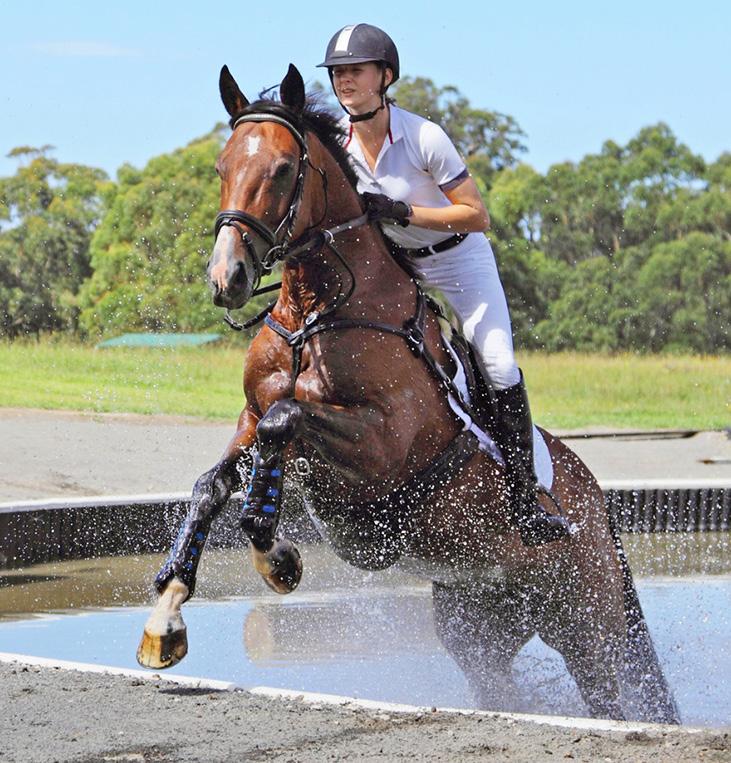
ABOVE: The amount of hard feed required depends on several factors including your horse's level of activity. LEFT: As autumn heralds cooler weather, your horse will need more calories to maintain their body heat.
When feeding laminitis-prone horses, in addition to managing forage consider adding DHA omega-3 and specific prebiotics designed to improve insulin sensitivity as part of your risk management plan.
Adjusting forage availability: Pasture grasses grown in regions with warm, wet summers are most active during long summer days. As days begin to shorten in late summer and temperatures drop in autumn, tropical grasses mature, go to seed and decline in nutritional value. At this time, horses need good quality forage, mainly in the form of leafy grass hay, with a small proportion of legume hay (such as lucerne), to provide enough protein and total intake for good health. If pastures contain any temperate species such as ryegrass, horses with metabolic conditions such as EMS or IR need very careful management during autumn
to reduce laminitis risk (see previously mentioned management strategies).
Maintaining healthy body condition: As grasses become lower quality and less abundant, some horses will need more calories than their grass and hay can provide. Increase the size of hard feeds in response to weight loss but always ensure free choice hay is available for underweight horses.
When needed, increase the level of energy (calories) in the diet with choices such as a cereal grain (oats or barley), a legume grain (lupins), a superfibre (beet pulp, soy hulls or lupin hulls), or oil – or any combination of the above. When choosing the most appropriate grain or energy source, consider the horse’s teeth, their digestive efficiency and how much time and energy you can dedicate to meal preparation. Whole oats can be fed raw, but other cereal grains such as
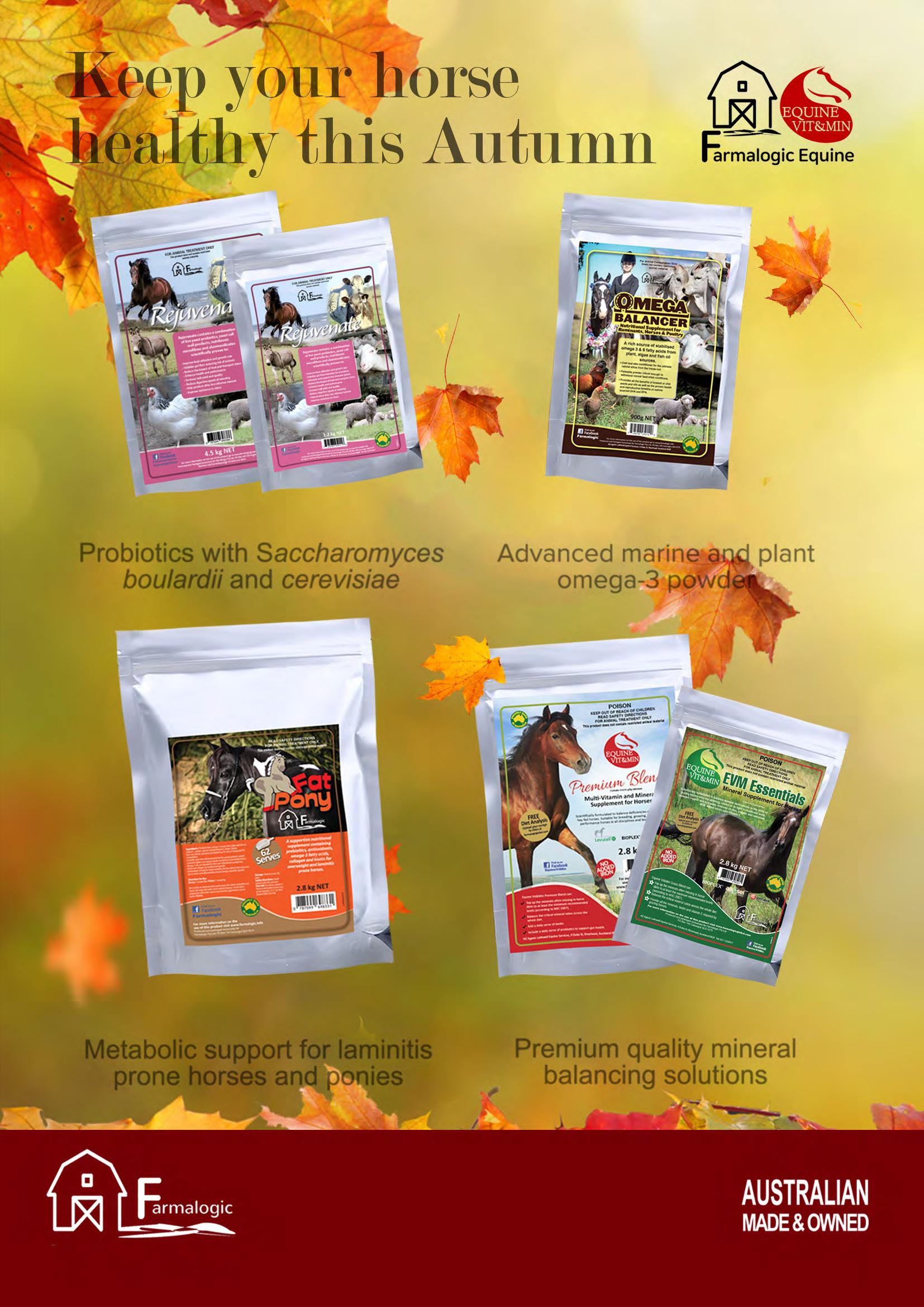



barley and oats must be fed in a cooked form – boiled, pelletised, steam-flaked or micronised. Some superfibres require soaking and whole lupins are also best soaked to soften the seed coat. The amounts of hard feed required depends on horse size, level of activity or breeding status, amount of energy provided by roughage, and the individual horse's metabolism.
Considerations for hay-reliant horses: Fresh grass is rich in many vitamins, which do not store well once grass is cut and cured for hay. Vitamins, especially A, B and E should be supplemented when hay is the major roughage source. Similarly, omega-3 fatty acids in fresh grass do not store in hay. These natural fats are responsible for providing antiinflammatory balance in the immune system, countering the pro-inflammatory omega-6 oils in hay and hard feeds. To tip the omega 3:6 ratio back into balance, there are various ways of supplementing omega-3 fatty acids including fish oil, certain types of algal powder, chia seeds and linseed (flaxseed) seeds and oils.
When horses eat a lot of hay rather than grass, they will drink more because hay contains much less water than fresh grass, so be sure to keep water troughs full of clean, cool water. It is also important to ensure enough salt is fed to keep water intake up and avoid impaction colic. Salt can be sprinkled through a large bale of free-choice hay, as well as added to each individual meal.
Low quality hay with a high proportion of stem and little leaf can cause horses to scour. If this occurs, replace up to 30% of the daily intake with lucerne hay, or increase grass hay quality by sourcing leafy hay. Increase electrolytes and add a probiotic containing S. boulardii live yeast to improve the gut health of horses with diarrhoea.
Regardless of the season, these best practices help ensure a smooth dietary transition and optimal horse health: w Make changes gradually: Any dietary adjustment should be made slowly over

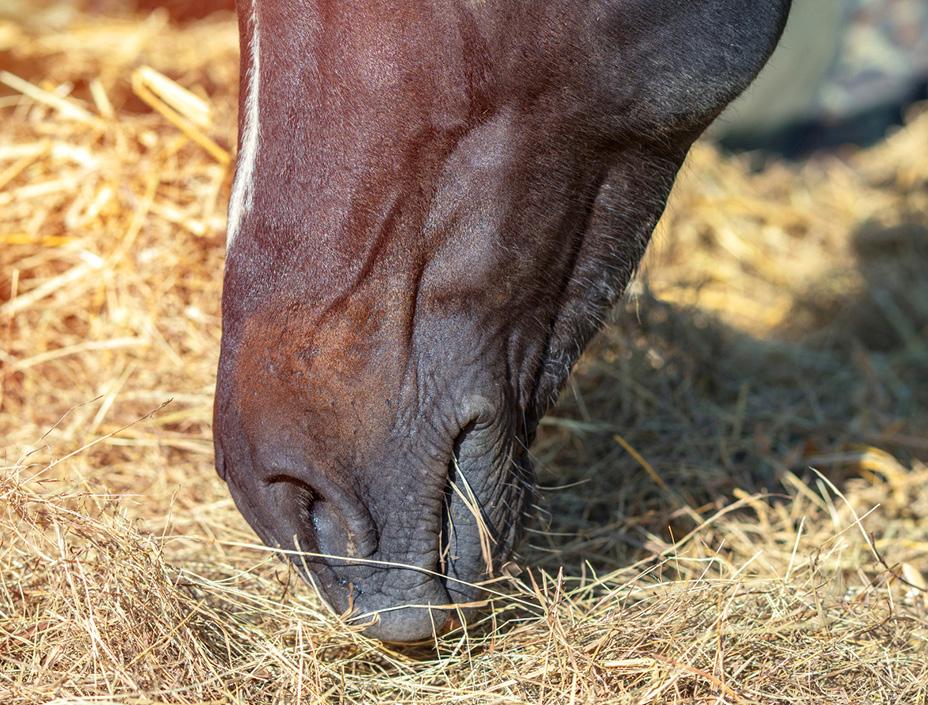
7 to 14 days to prevent digestive upset. If possible, introduce horses to green grass paddocks gradually, beginning with less than an hour once or twice a day and slowly increase. Sudden changes in feed or forage can disrupt the gut microbiome and lead to colic or diarrhea. Horses with gut sensitivities who scour or develop fecal water syndrome with significant changes in pasture, can benefit from supplementation with probiotic live yeast (especially Saccharomyces boulardii and cerevisiae) or hindgut buffers to help maintain a more stable hind gut pH w Monitor body condition regularly: Seasonal changes in pasture quality and availability can cause fluctuations in body fat. Use a body condition scoring system to track weight and adjust feed as necessary. Small, frequent changes are better than fewer, large dietary adjustments.
w Balance nutrients properly: Ensure that horses receive a well-balanced diet with appropriate levels of fibre from forage, the primary energy source; proteins for muscle maintenance and repair from leafy forage, legume grains or forage; fats for omega-3 balance and to add energy without excess carbohydrates;
vitamins and minerals essential for immune function, hoof health, and overall well-being; and electrolytes, because even in cold weather horses still need at least 7g of salt per 100kg bodyweight, which encourages them to keep drinking.
w Consult an expert: An equine nutritionist or a veterinarian with a special interest in nutrition can help fine-tune feeding plans based on individual horse needs, workload, and metabolic conditions. This can ultimately save on costs through a reduction in unnecessary supplements, improved ‘fuel efficiency’ and better immune function.
Feeding horses during the transitional seasons of autumn and spring requires careful planning and proactive management. By understanding the unique challenges of each season, whether it’s maintaining body weight or preventing laminitis, owners can ensure their horses remain healthy, happy, and well-nourished. Through gradual dietary adjustments, close monitoring, and a well-balanced feeding regimen, horses can thrive through seasonal changes.
Larissa Bilston, BAgrSc (Hons) is the Equine Nutritionist for Farmalogic

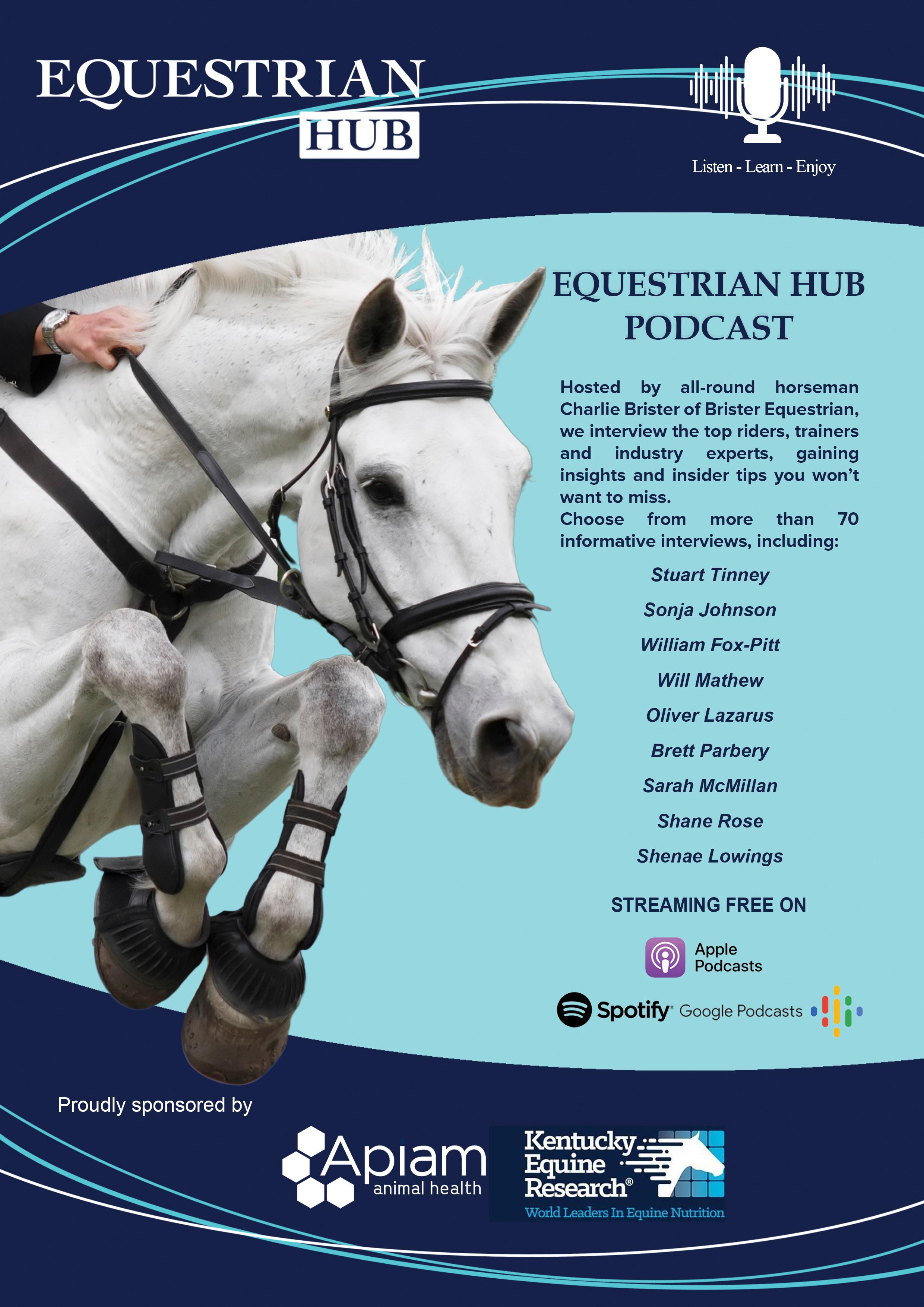

This is the era of innovative smart gadgets - for humans and horses.
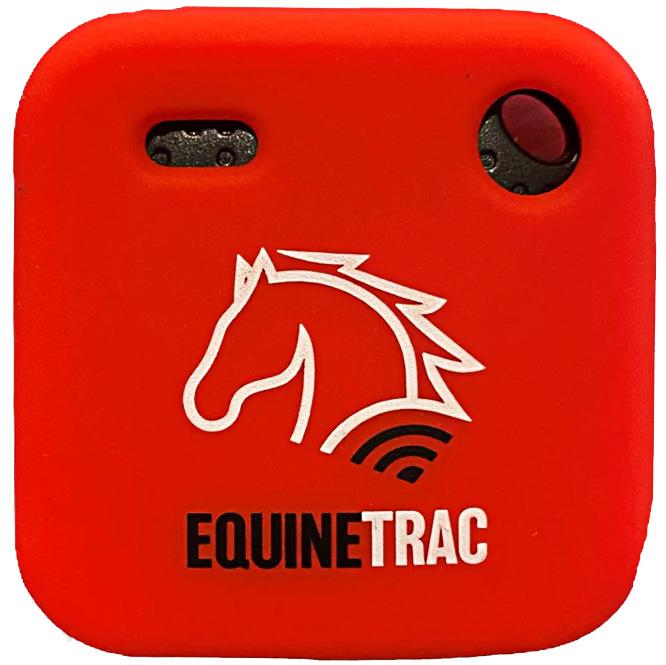
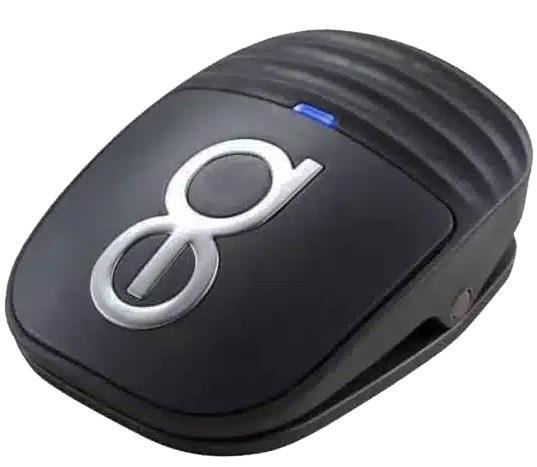
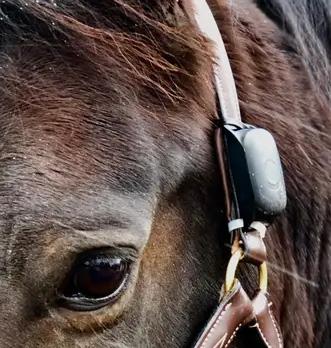
The EquineTrac Wireless Smart Sensor attaches neatly to your saddle. Should you have a fall, EquineTrac will alert your chosen emergency contact with a GPS map point of your location. You can pause the sensor if you need to dismount during the ride. If you often ride alone, this one is a winner.
Estride™ Harmony's pressure sensing mat measures the distribution of saddle and rider pressure on your horse’s back. Use it to check saddle fit, or analyse your riding technique with pressure data that provides an in-depth analysis of the impact you have on your horse's stride.
For insights to help customise your training plan, try the Equestic Saddle Clip. Identify irregularities in your horse’s gaits and monitor their progress with data that includes rhythm stability, impulsion, and the symmetry of push off and landing in trot, as well as changes in movement patterns.
One of the few smart watches to offer a horse riding setting in its fitness tracker, the Polar Vantage M2's battery power will last for a full day’s ride. It includes heart-rate monitoring along with GPS tracking, so you can see how fast and how far you’re riding.
Ideal for equines who love to roam, the MiniFinder Atto improves your horse’s out door safety with world-class GPS technology that works in all countries with GSM/GPRS coverage. Let Atto's smart tracking and alarm functions help to give you peace of mind.
Developed by Swiss riders and engineers, MOVE PRO will give you some of the most precise data available. Using aeronautics industry technology, the MOVE PRO analyses your horse in a 3D environment, detecting balance and recording cadence, speed, duration, and your session’s energy consumption.

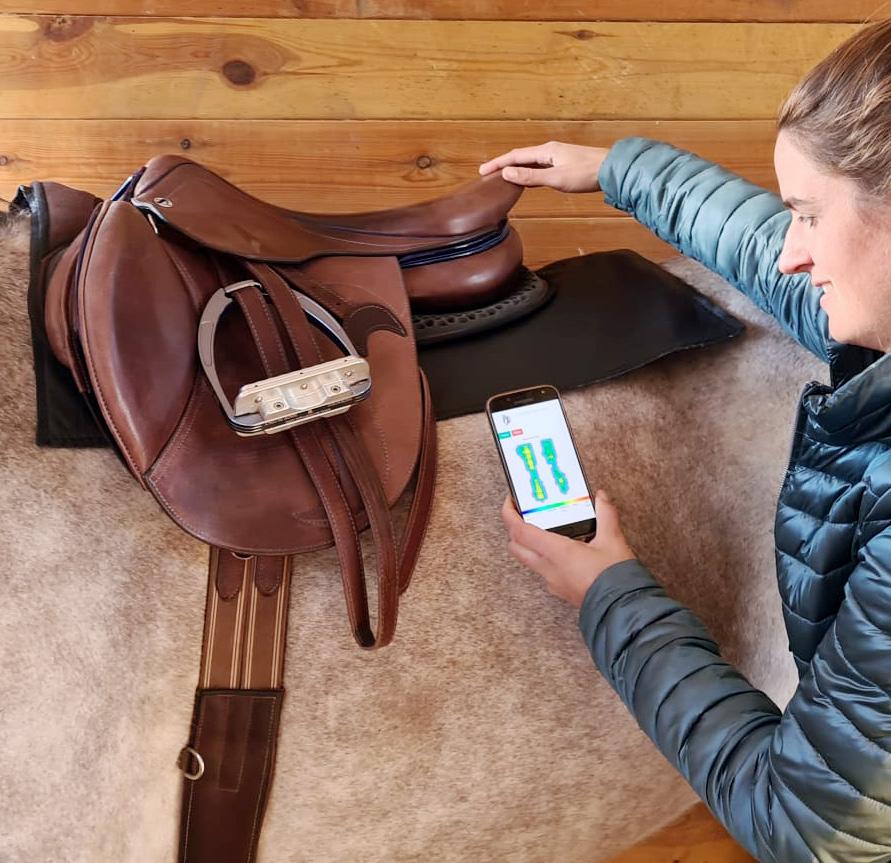
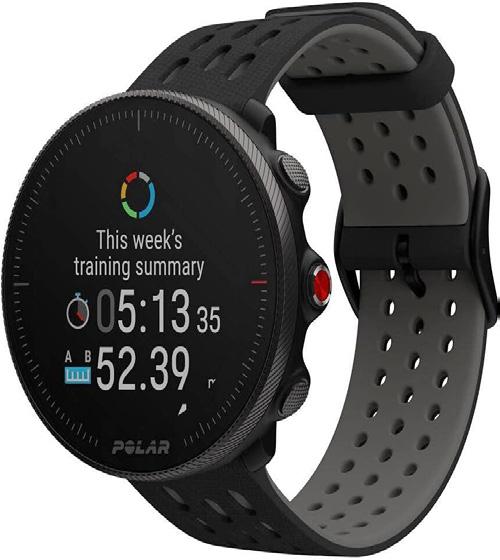
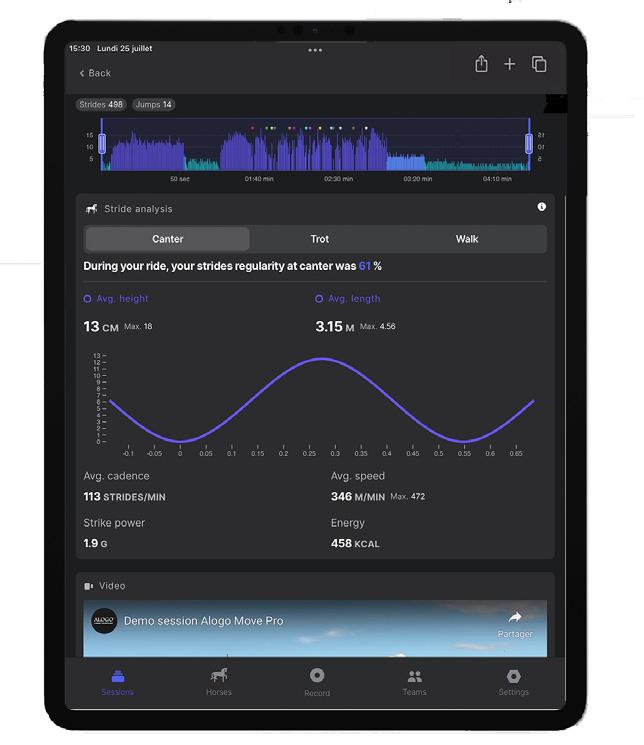


Located at 2038 Old Gympie Road in Queensland's Glass House Mountains, this exceptional property offers the ultimate lifestyle.
Tucked away in the heart of the beautiful Glass House Mountains, this exceptional hinterland property offers the ultimate lifestyle for horse enthusiasts, with privacy and space a bonus. A professionally designed 40 x 40 metre arena, three stables, and a generous paddock ensure your equestrian needs are catered for.
The home itself is open plan and features a stunning outdoor entertainment area finished with travertine stone tiles. There’s a seamless blend of indoor and outdoor living that’s ideal for hosting family and friends, or for simply unwinding in peaceful solitude. The property is designed with practicality and convenience in

mind, offering a safe, fully fenced and secure environment for your entire family, pets included, with the comfort of air conditioning in the main areas. A large 10kw solar system ensures the affordability of running this delightful home.
A generous master bedroom with ensuite, three additional bedrooms with
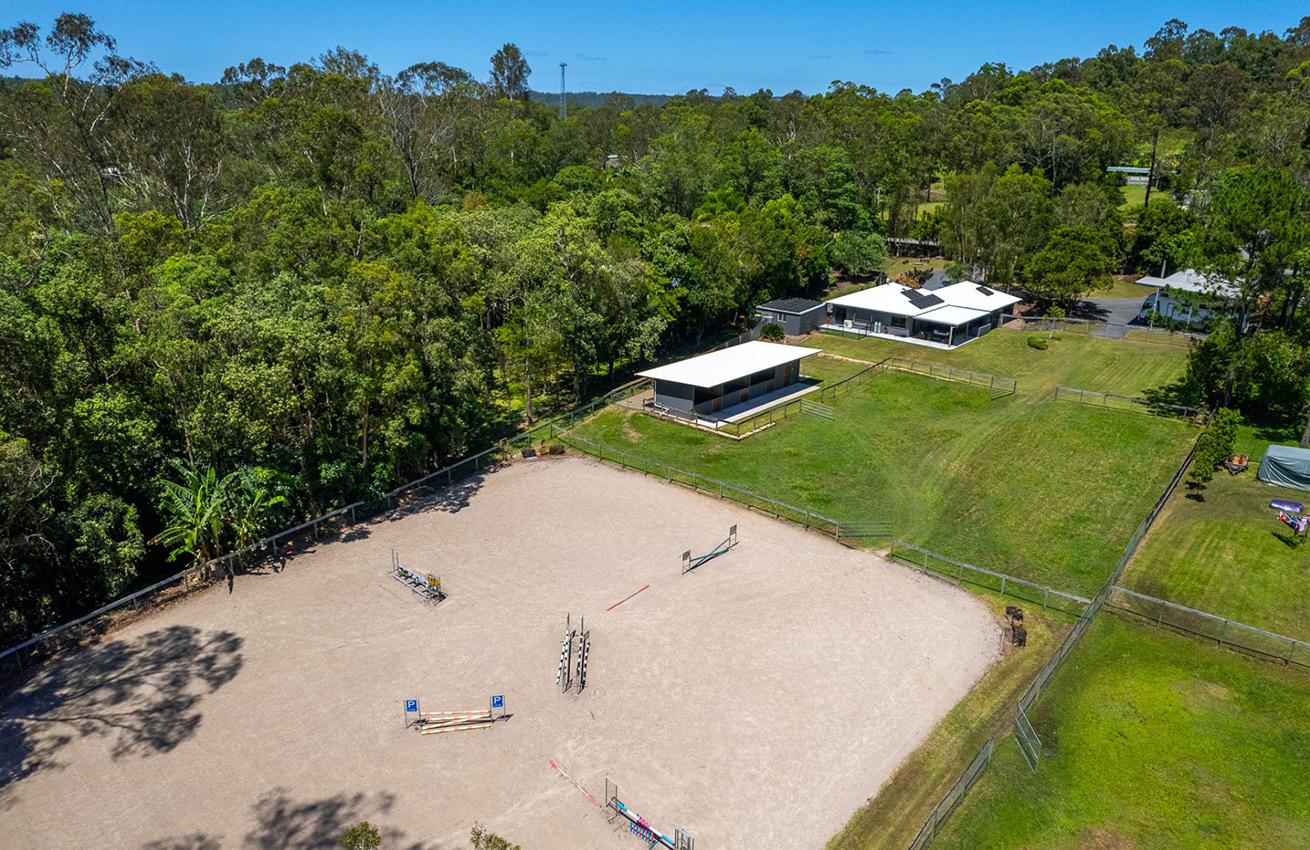

fans and built ins, a gorgeous modern bathroom, spacious kitchen, large sunken lounge and dining space, and a second living and entertainment area complete this enticing picture.
If you need extra storage or workspace, the massive 13m x 8m shed is a standout feature, along with a 5m x 12m extension so your float or truck can be
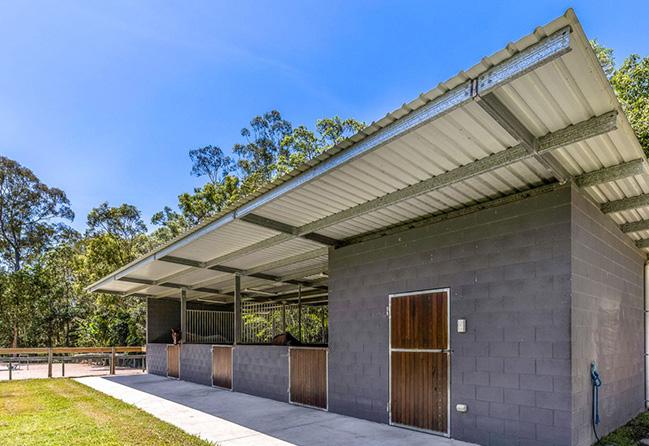
kept undercover and protected from the elements. With dual driveways for easy access, the property caters to a wide range of lifestyle choices. To complement the three modern, open-air stables, there’s an all-weather arena and a spacious, fully fenced paddock.
Located minutes from the Glass House Mountains township, and just under
The stables are designed to allow healthy airflow and the interest of outside views.
an hour to the Sunshine Coast and Brisbane Airport, this property offers seclusion and tranquillity, coupled with the convenience of easy access to all those essential facilities and services.

For further details, visit Horse Properties, or call Jack Cornford of LJ Hooker Beerwah on 0484 241 803.


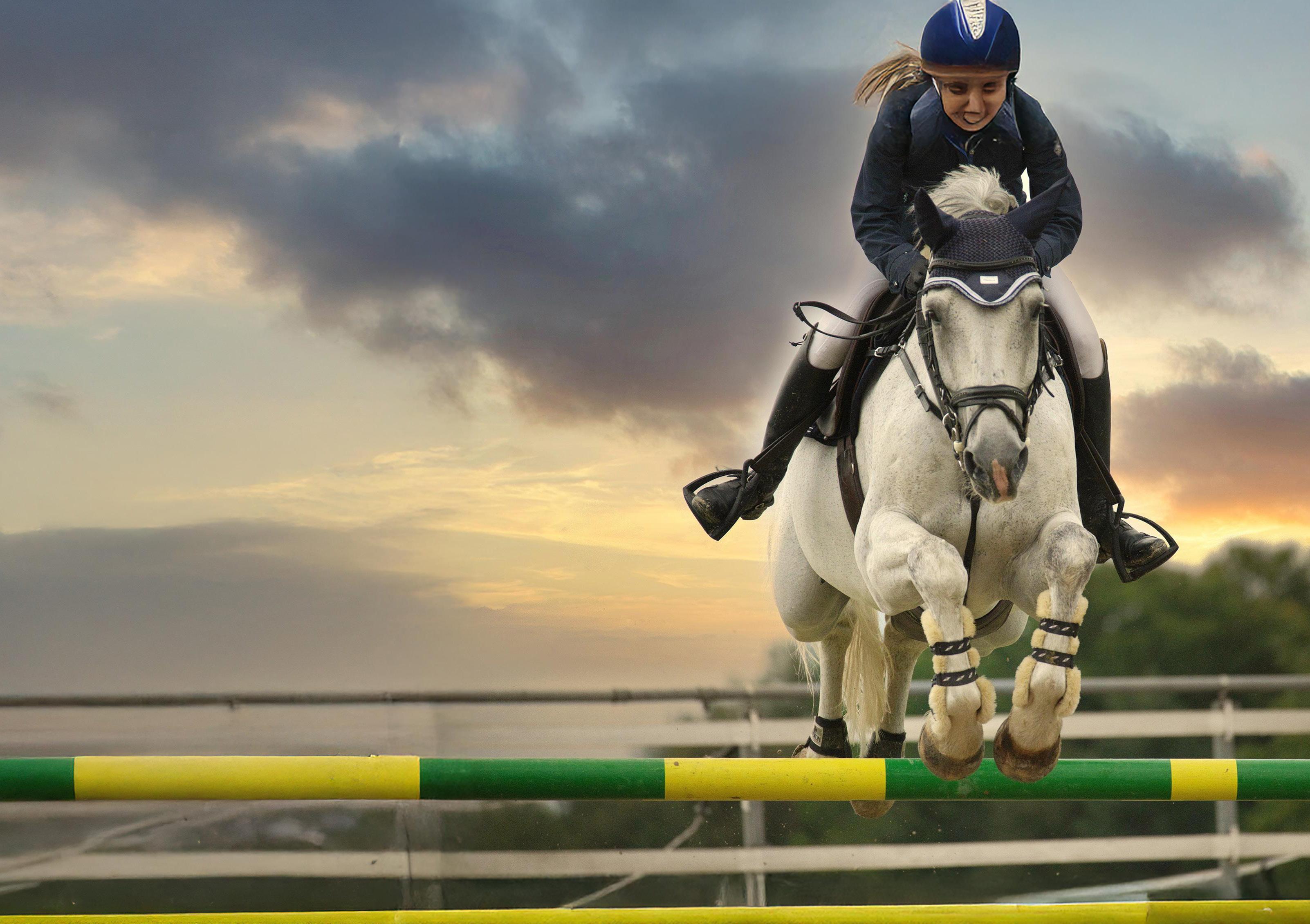
CELEBRATE, ALL MARKETPLACE LISTINGS BOOKED BEFORE 30TH 2025 ARE FREE! DON’T MISS OUT! START SELLING NOW!


